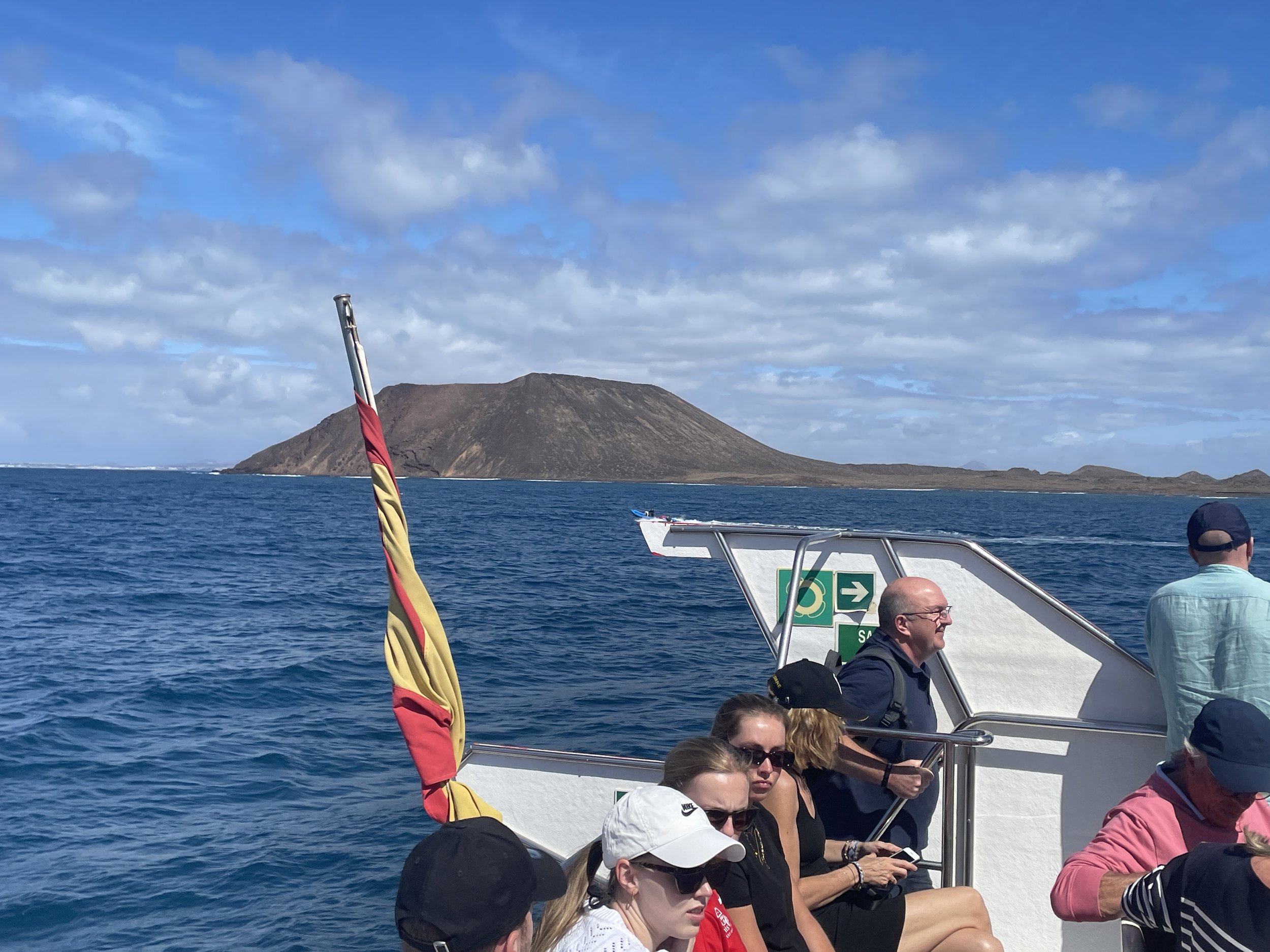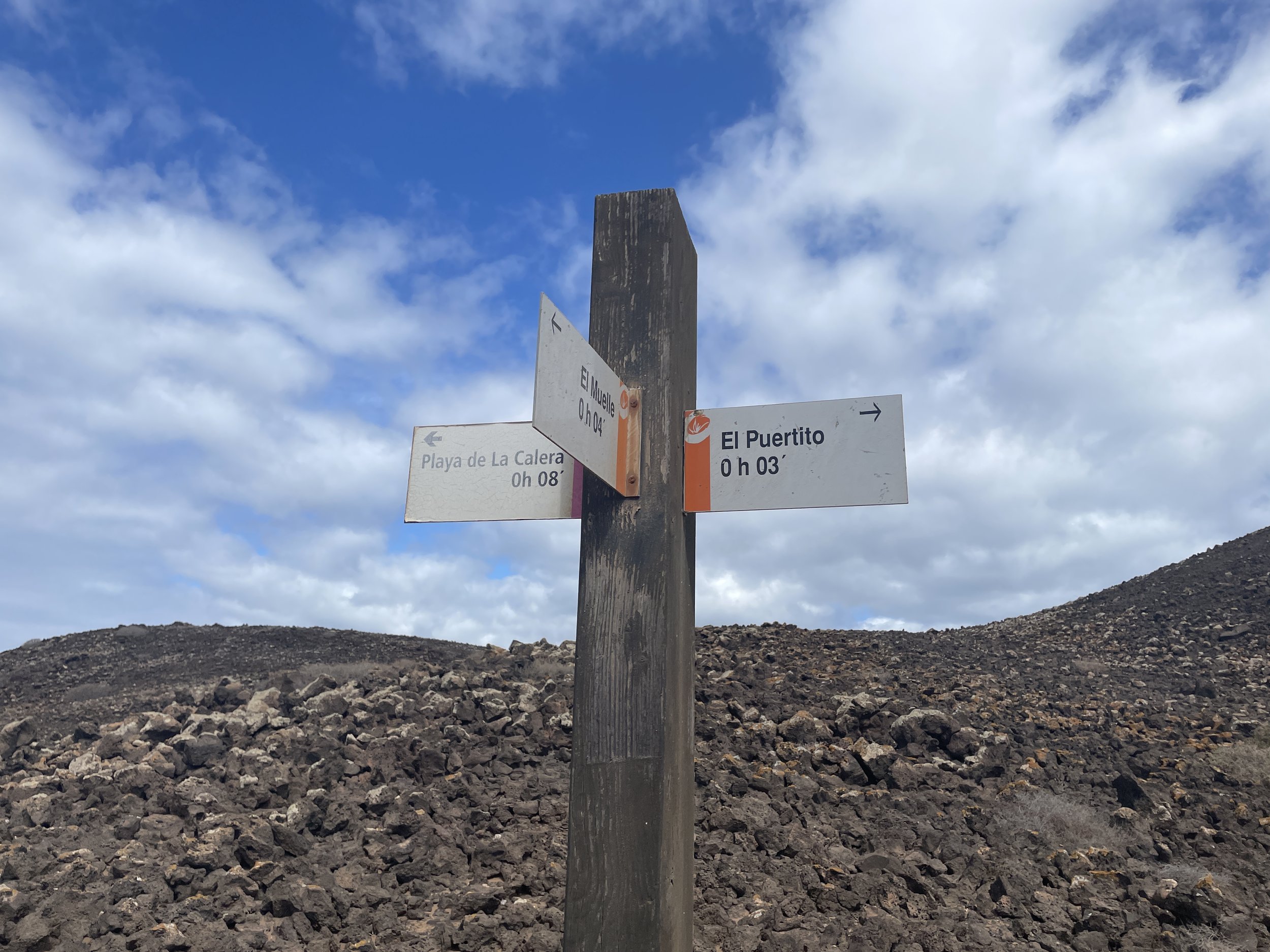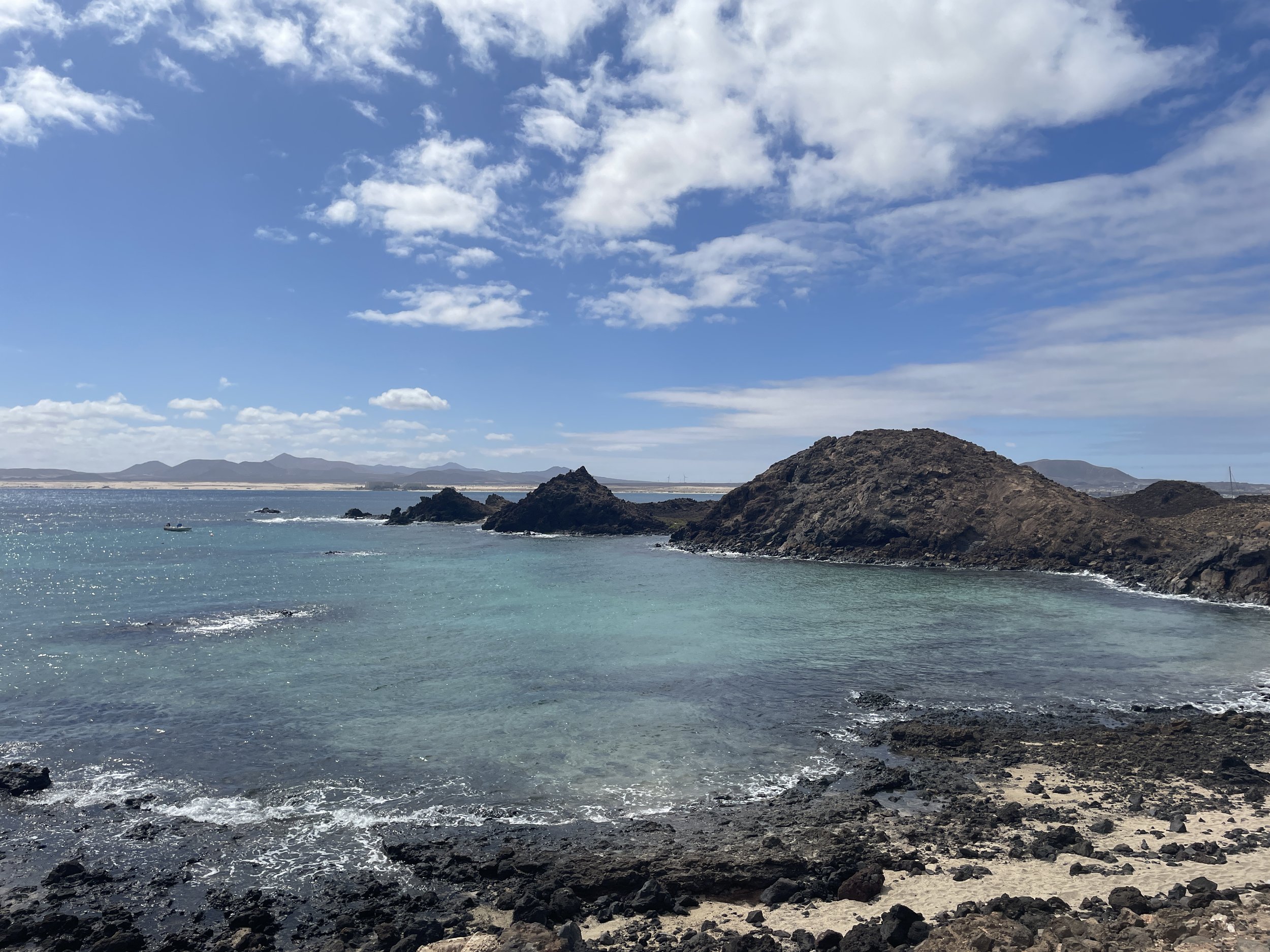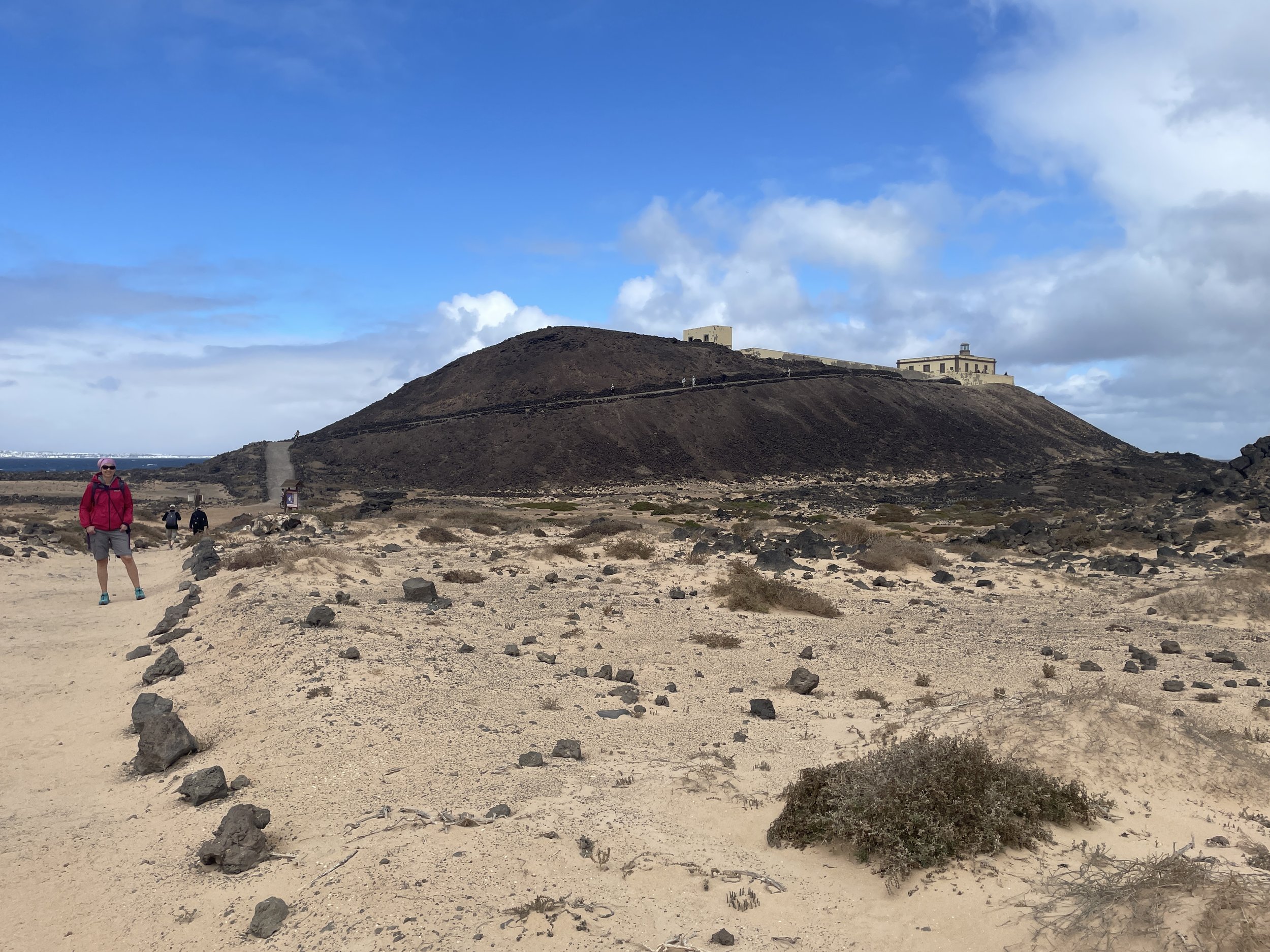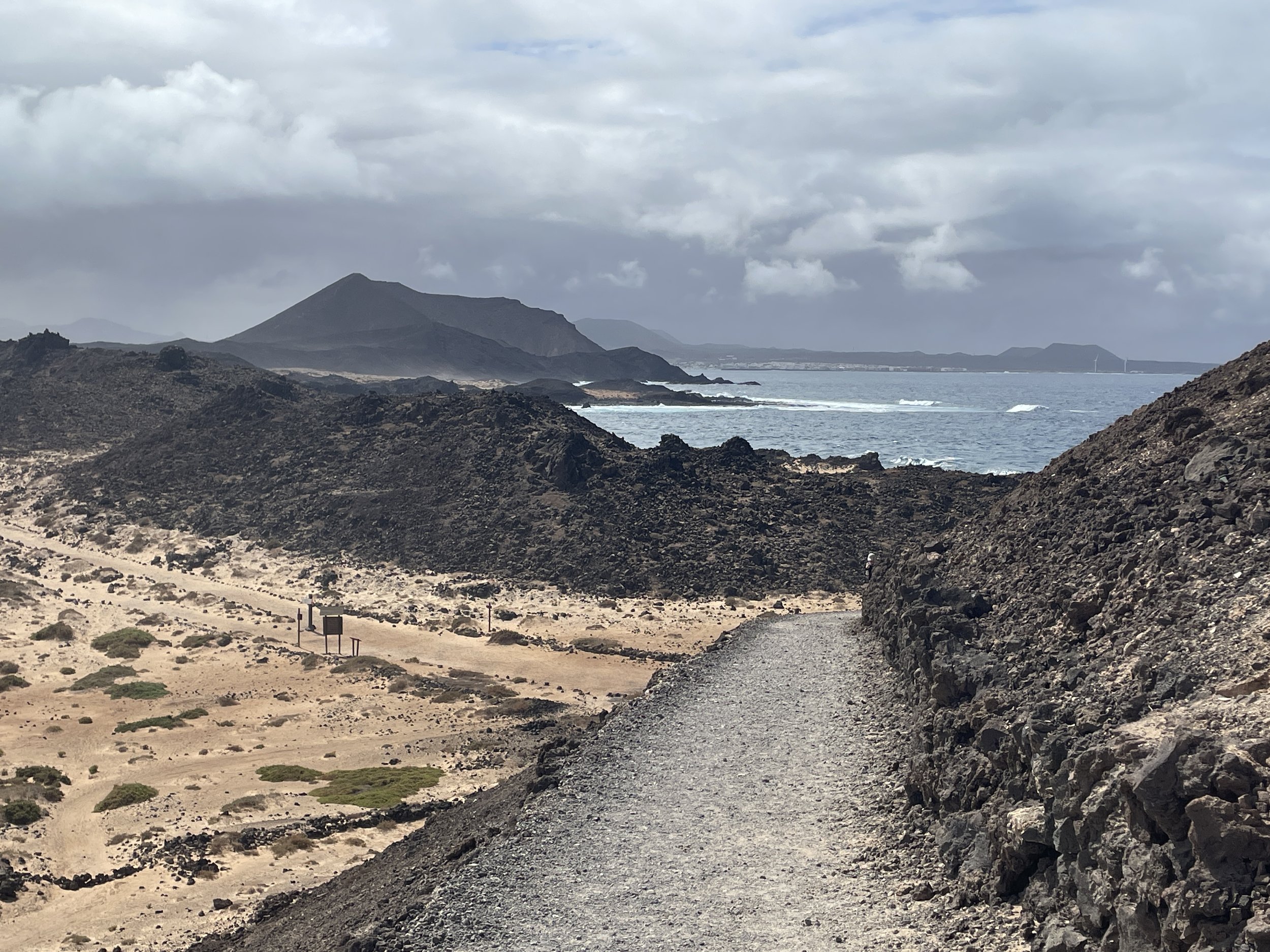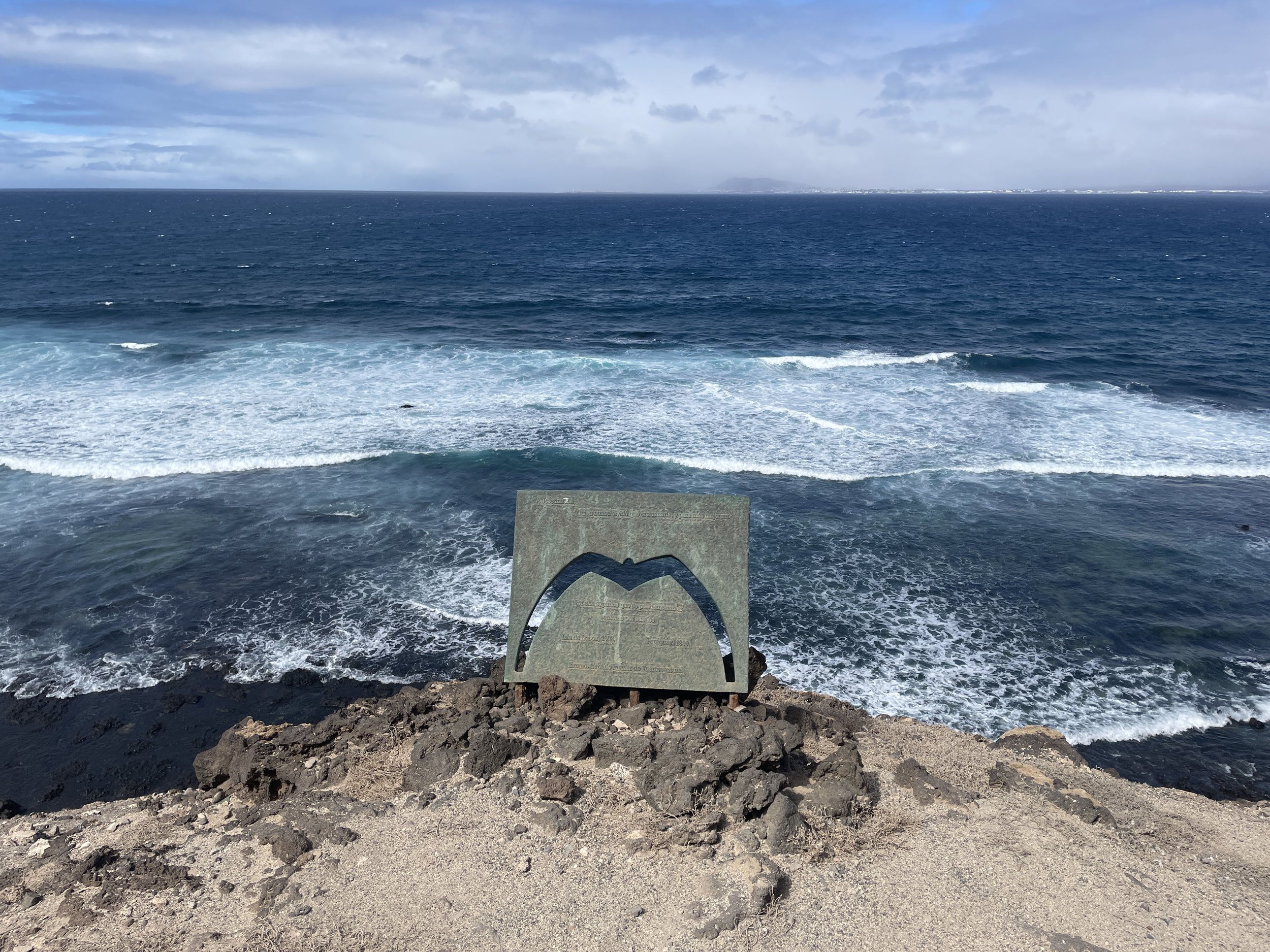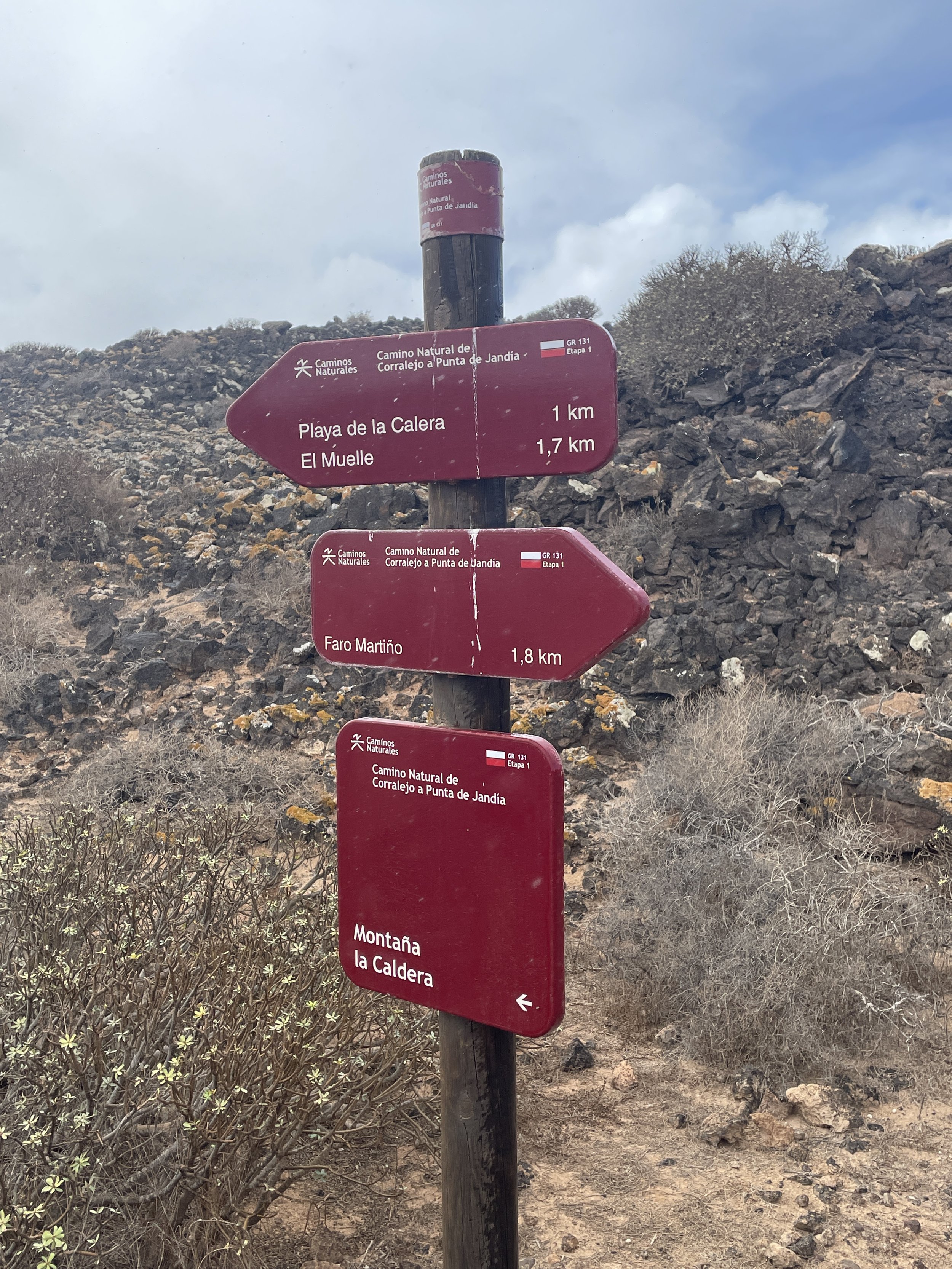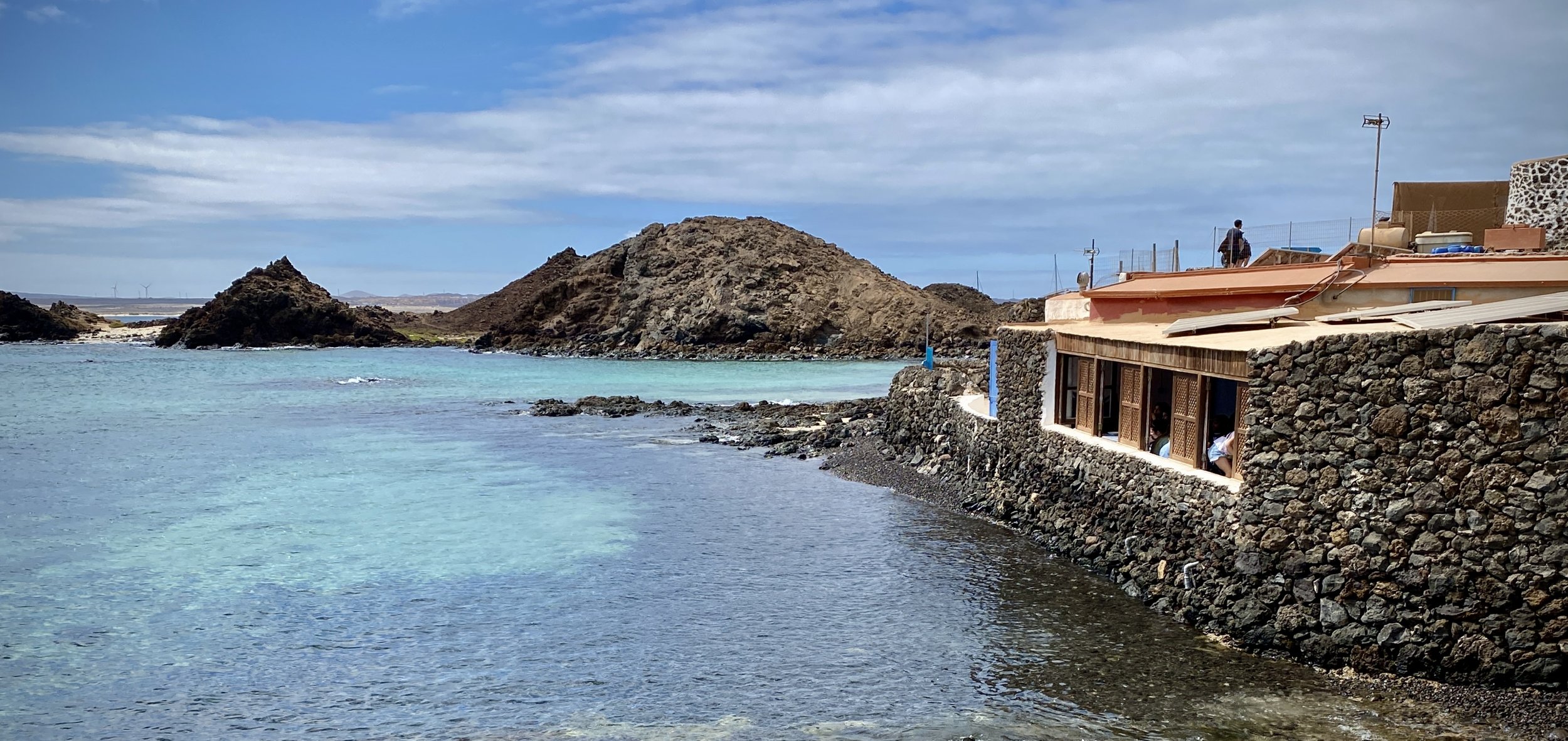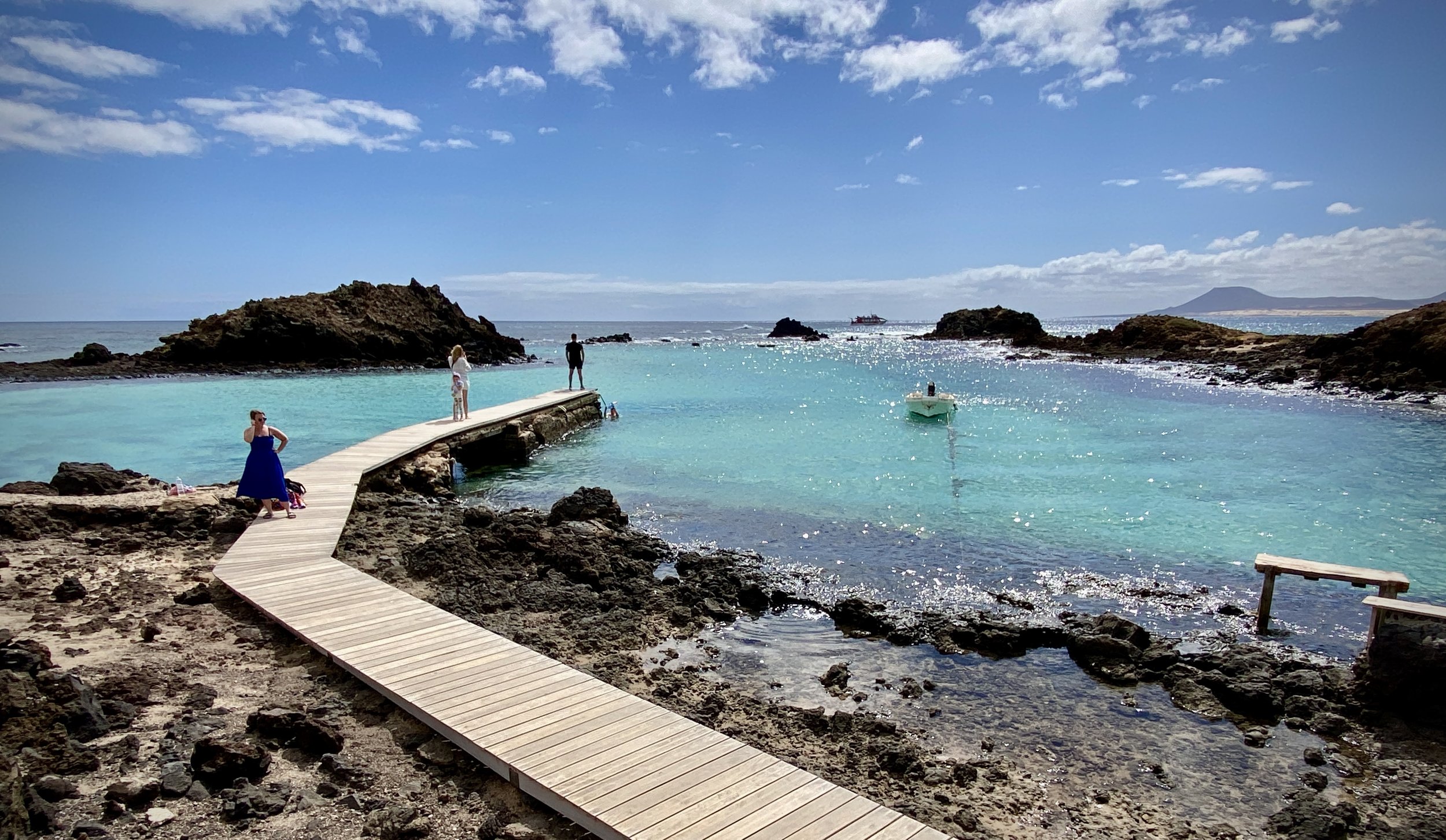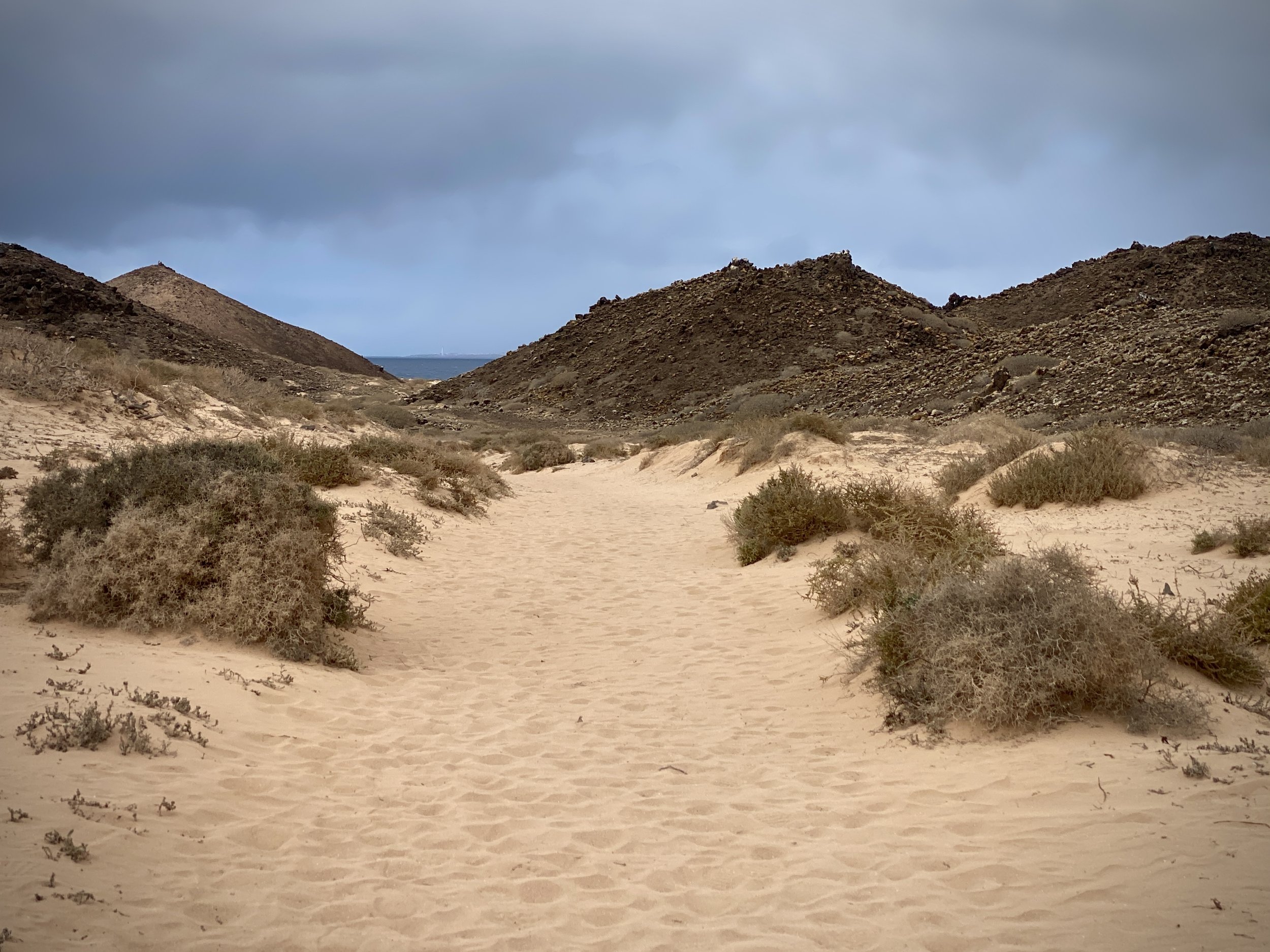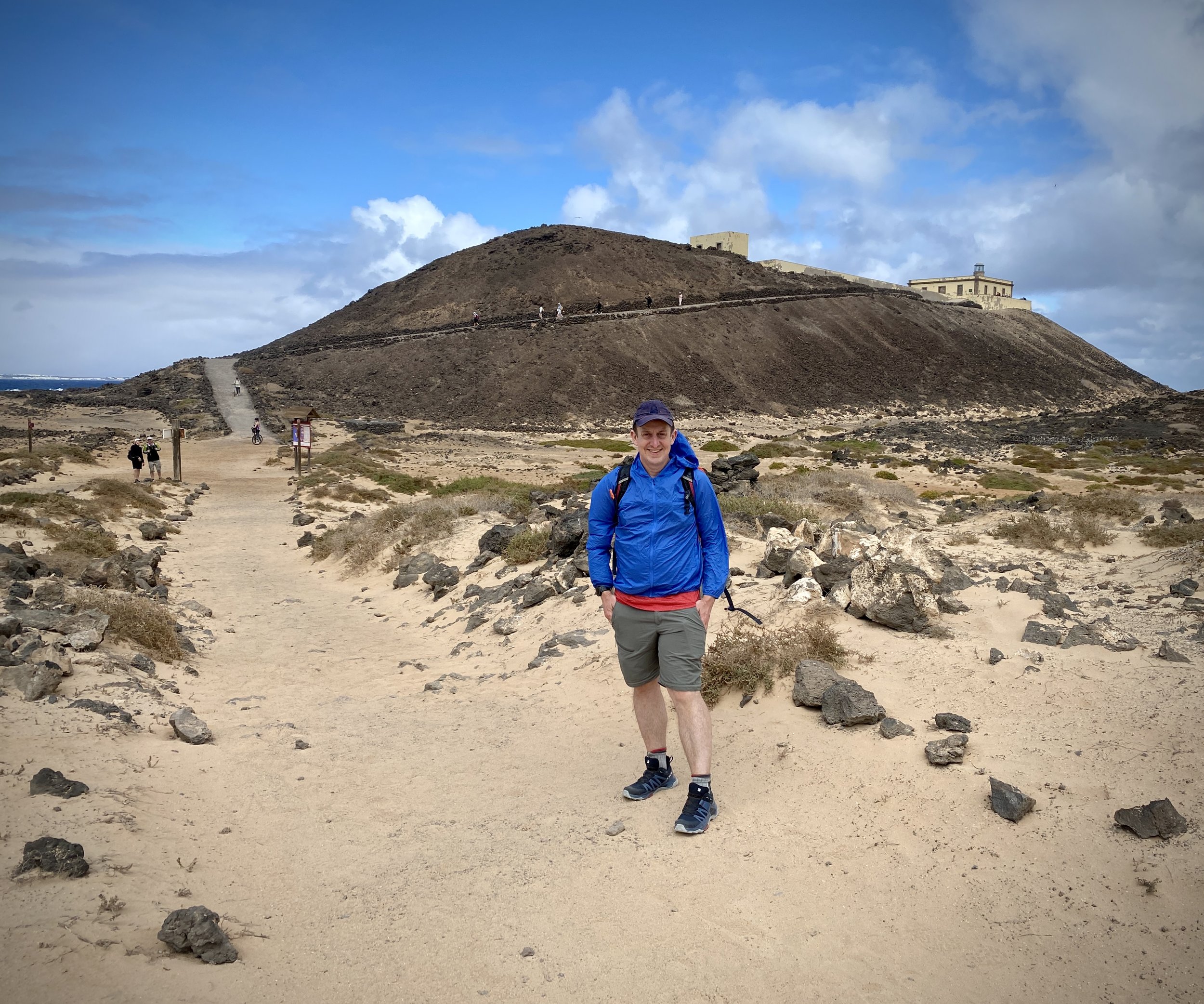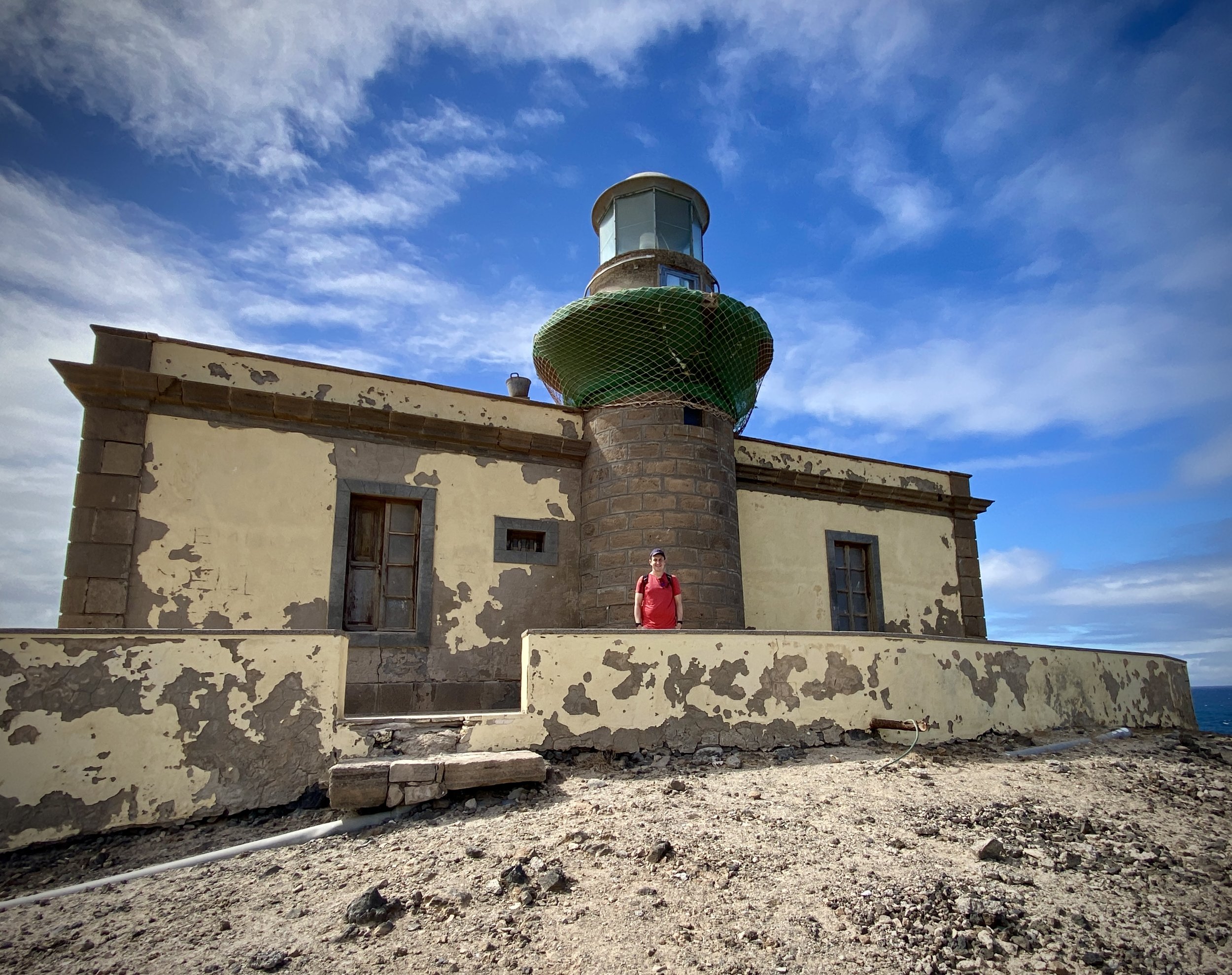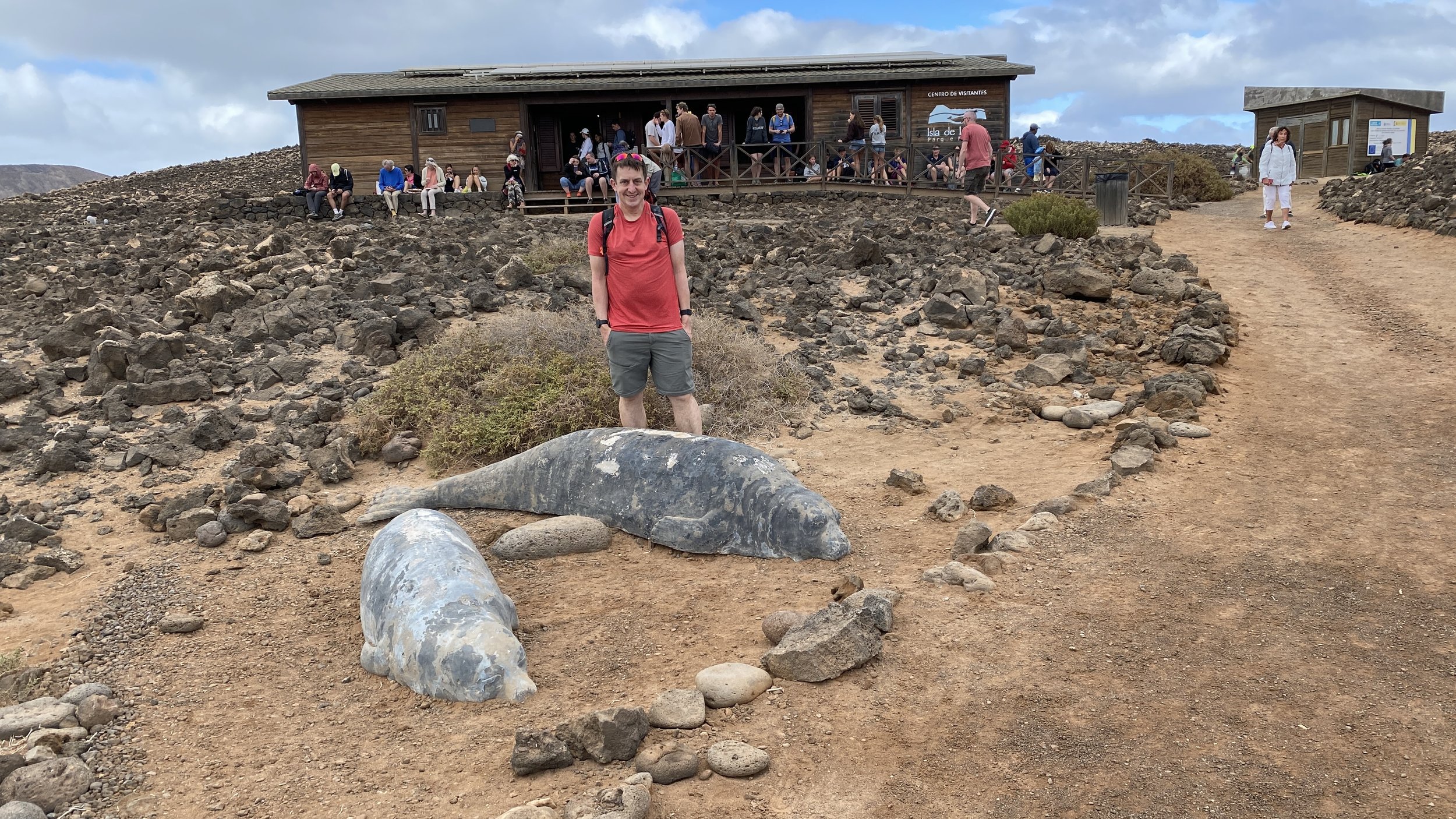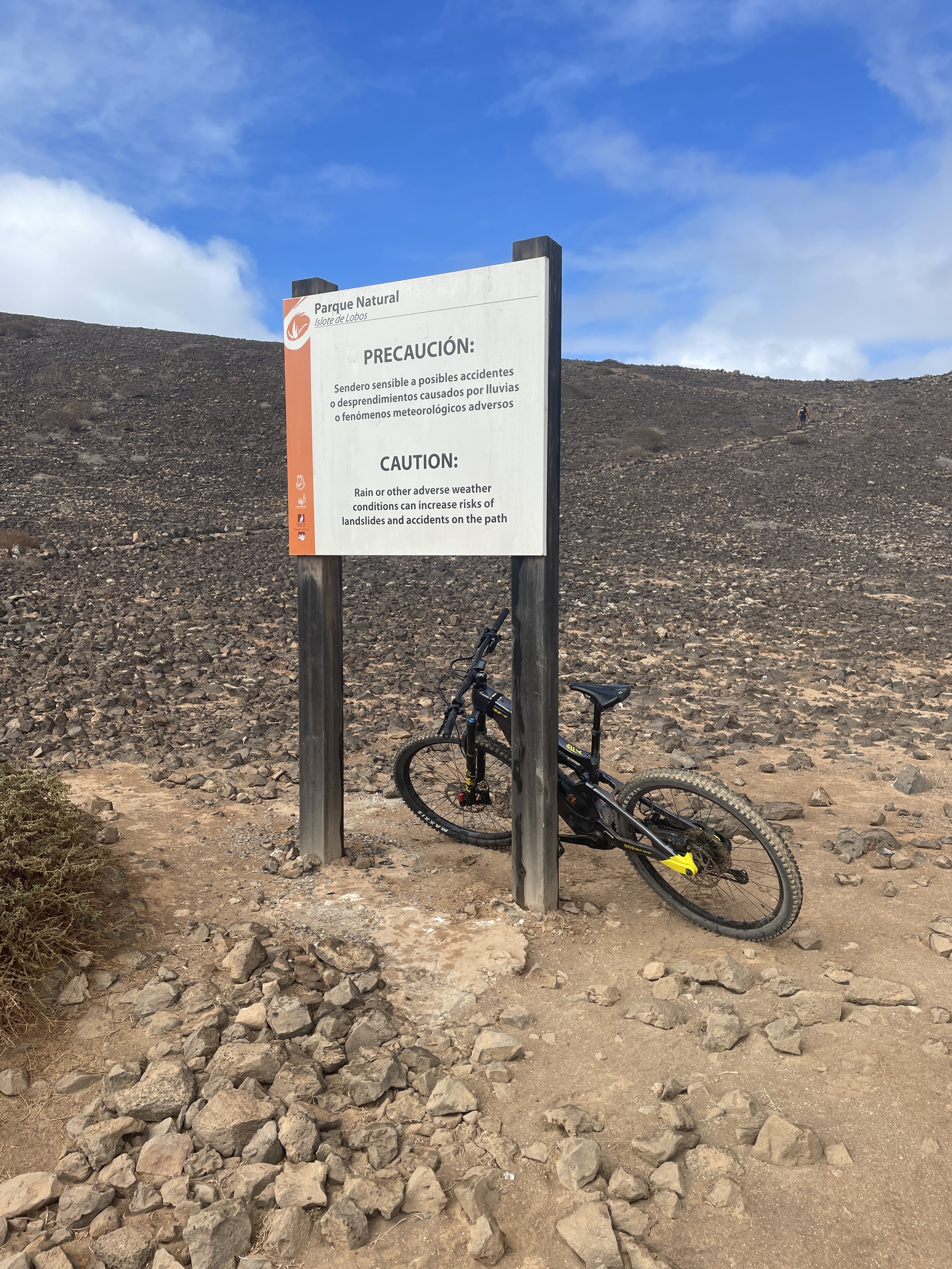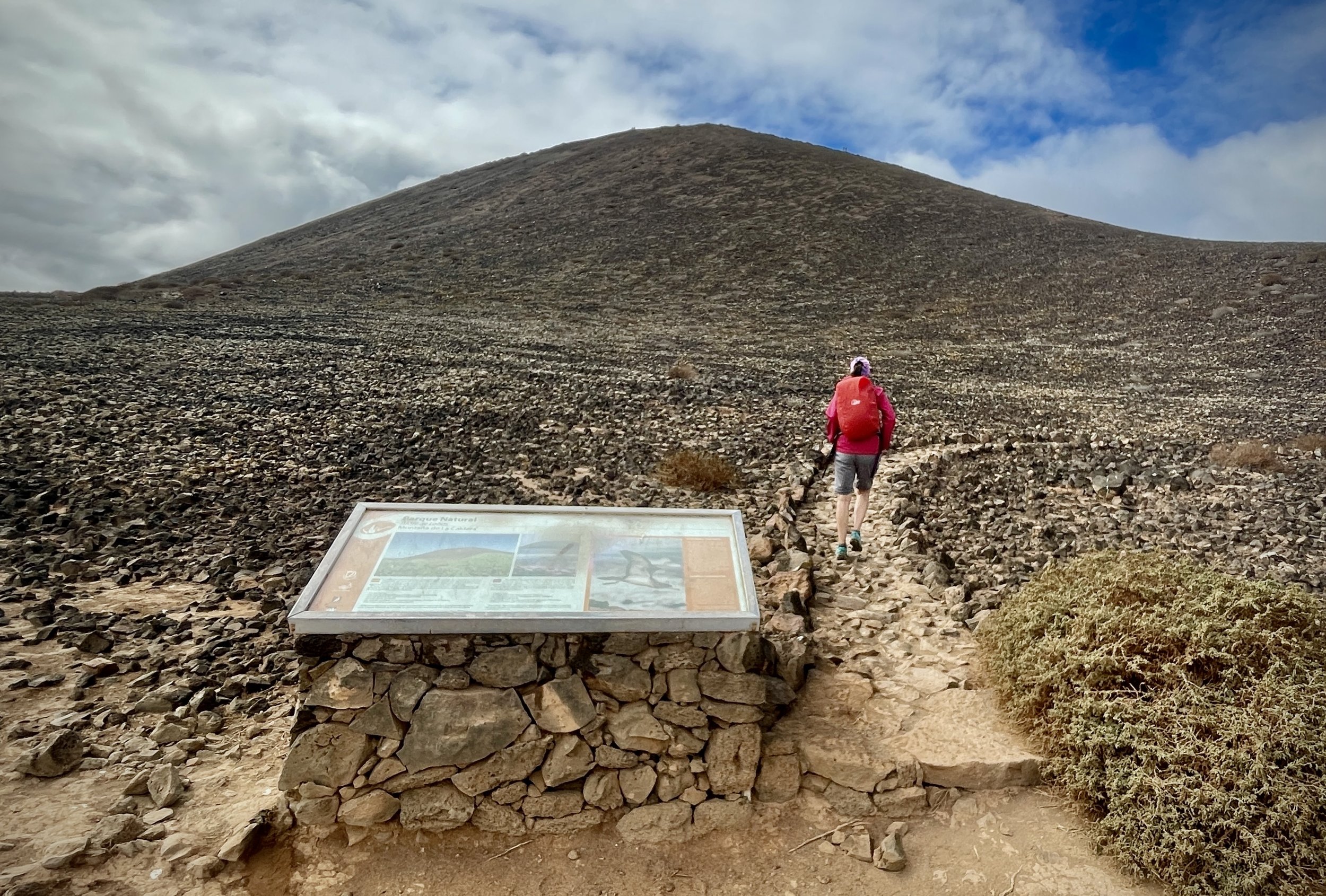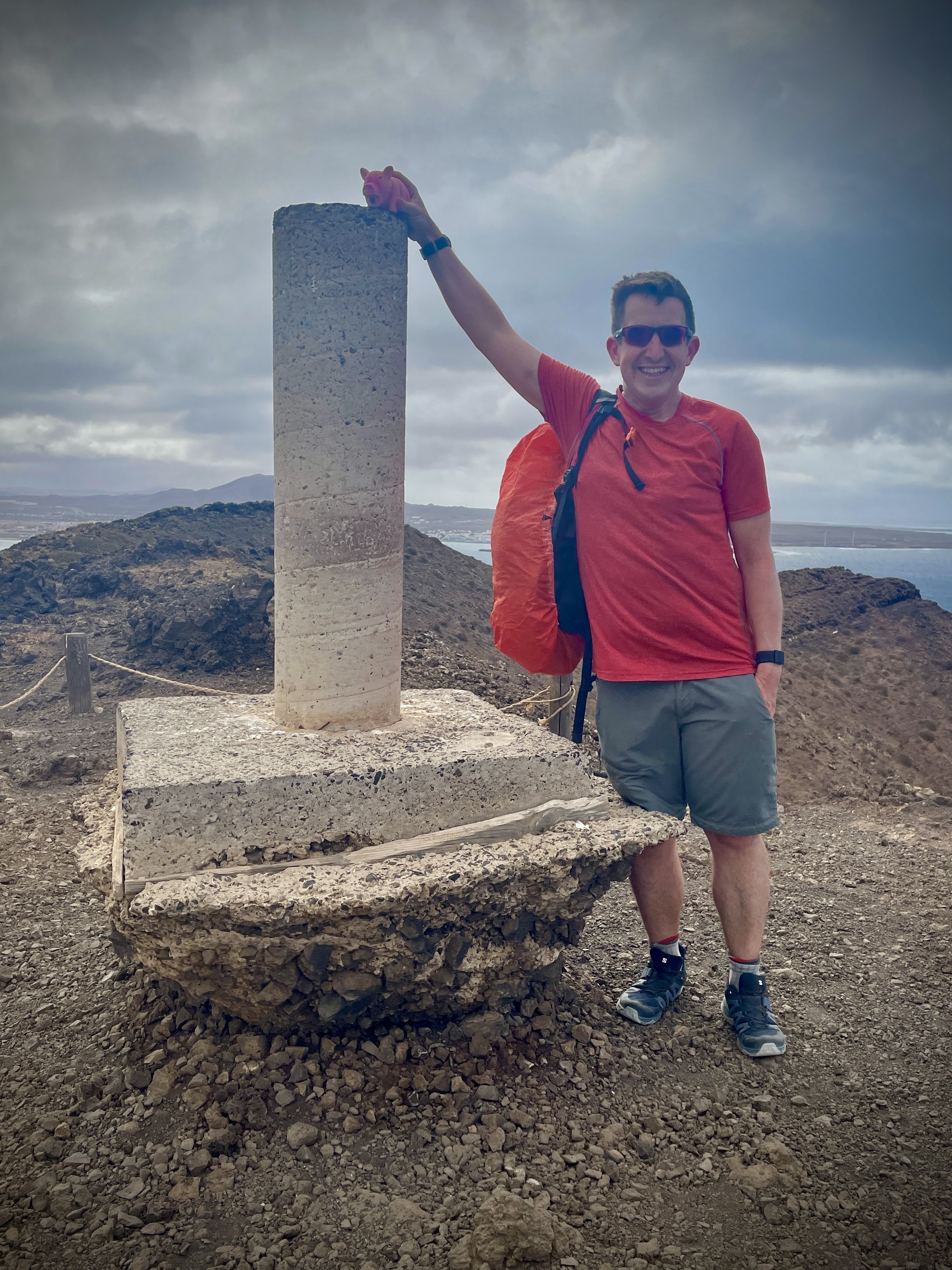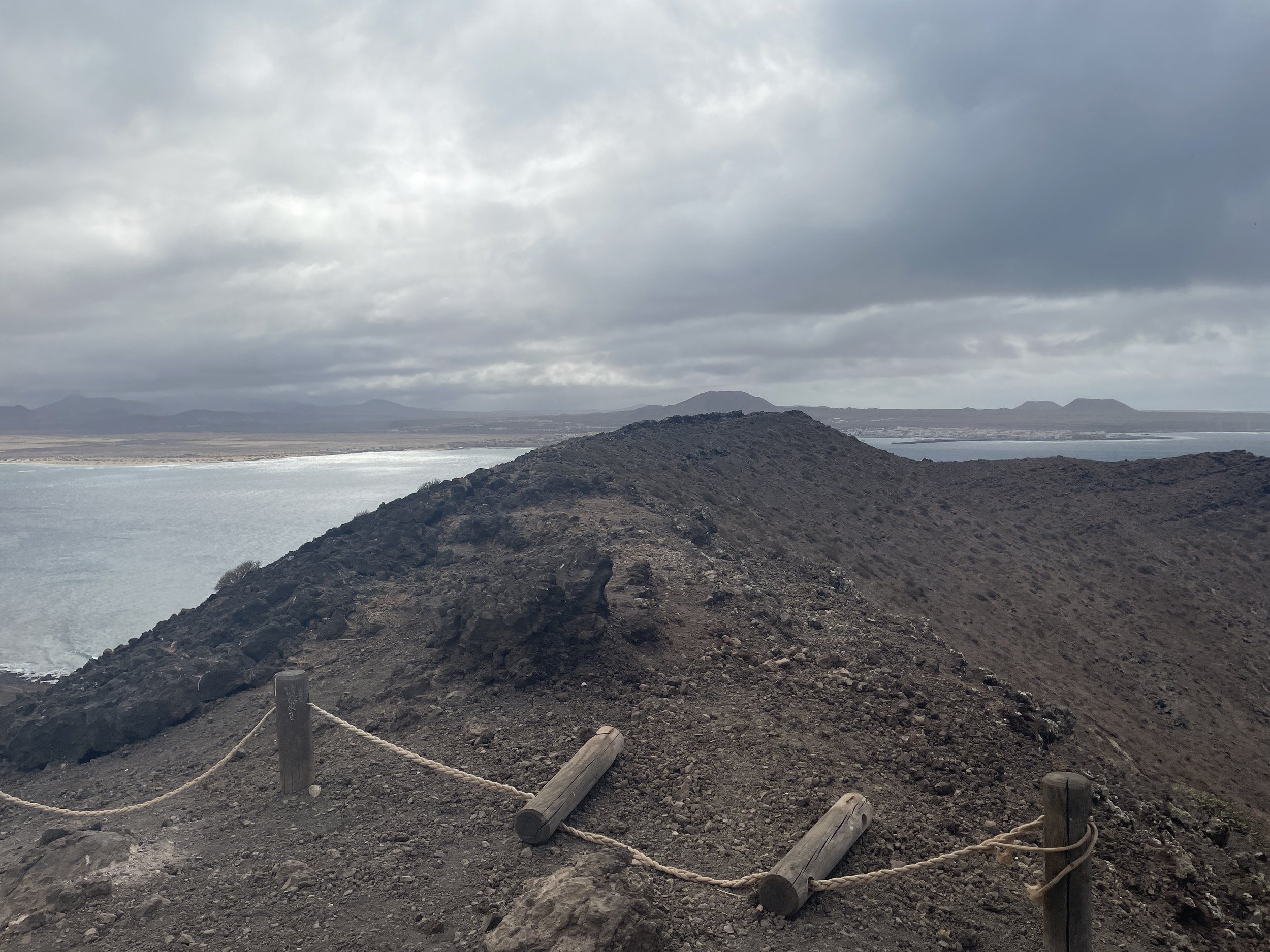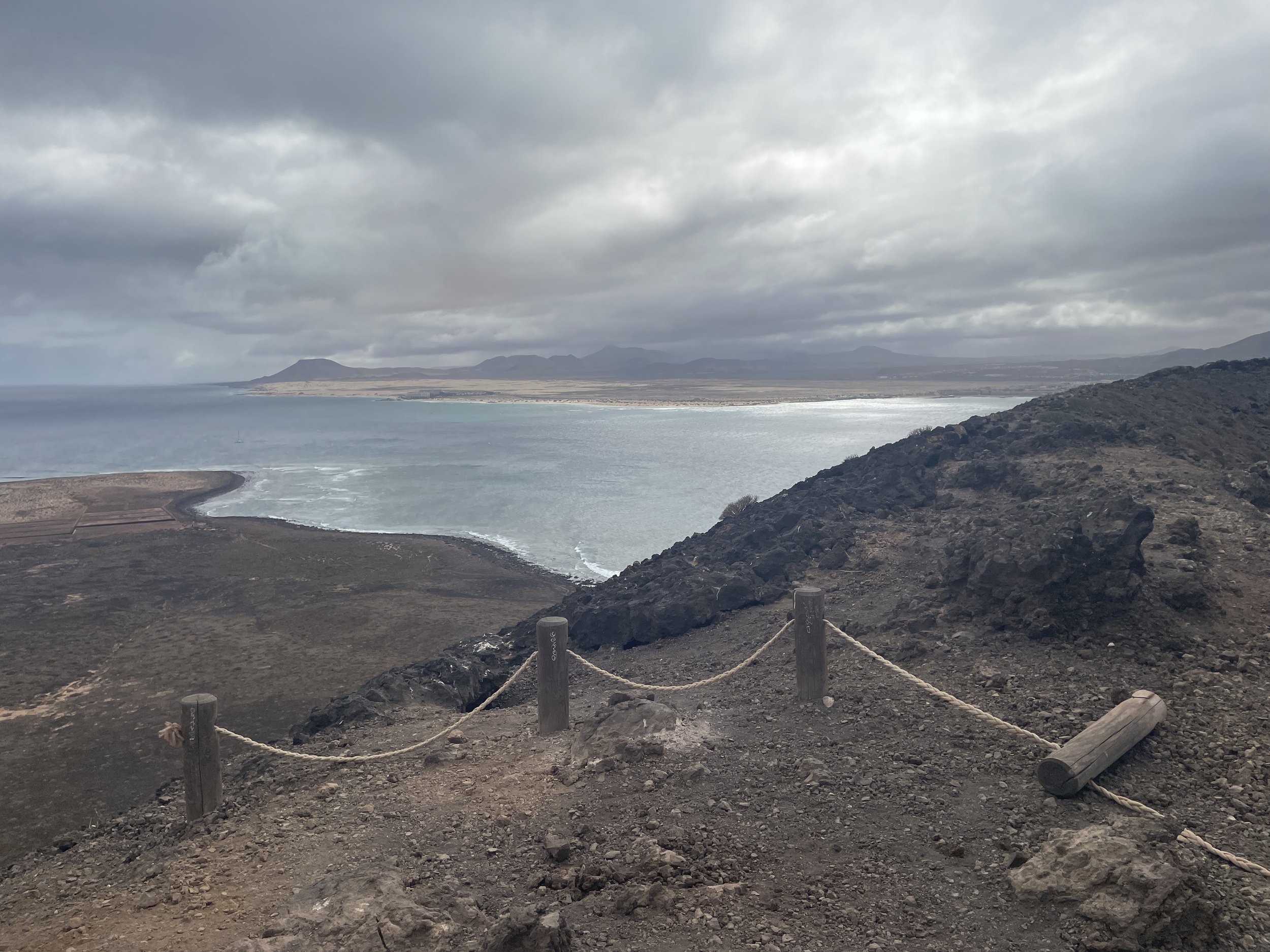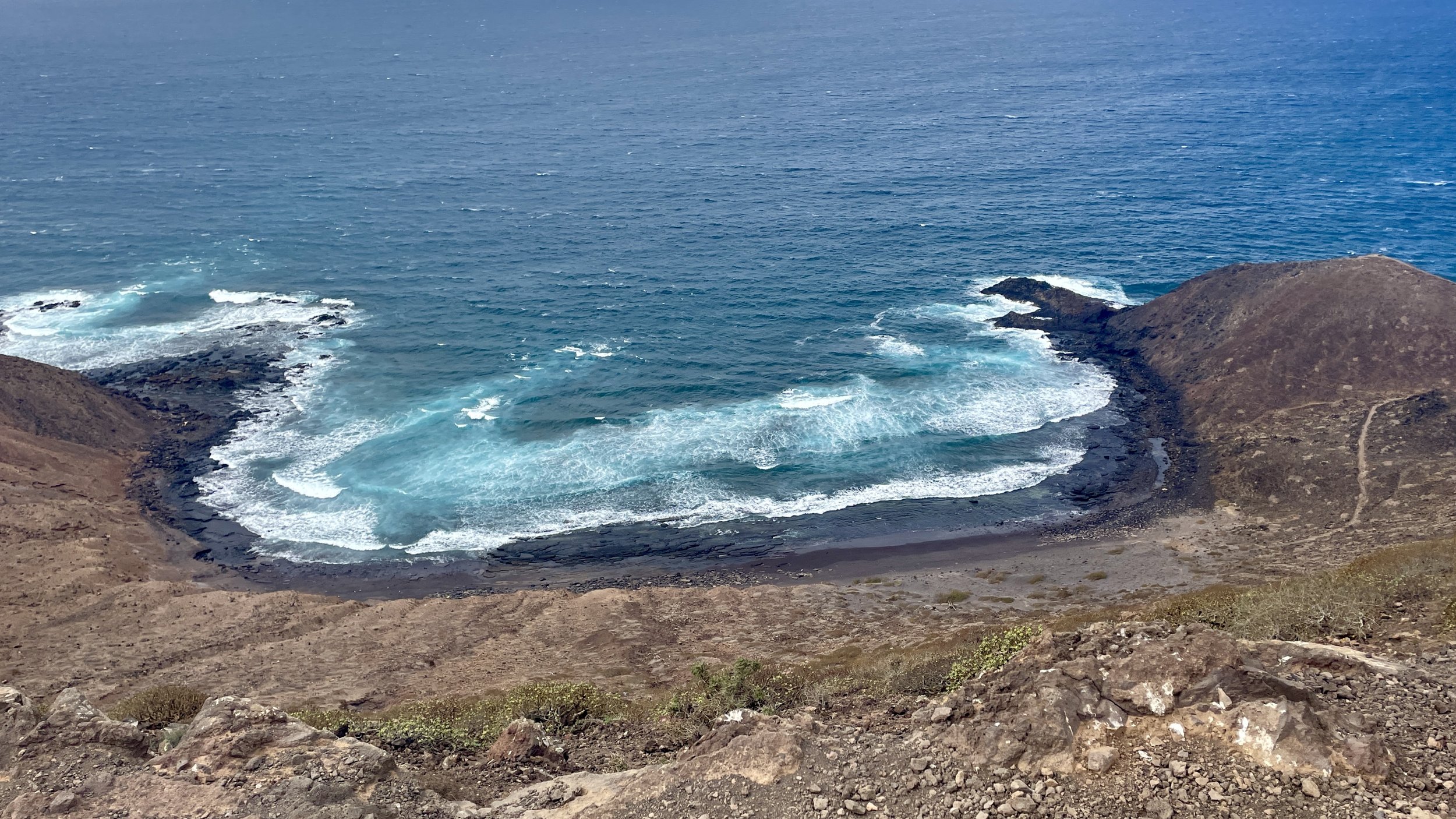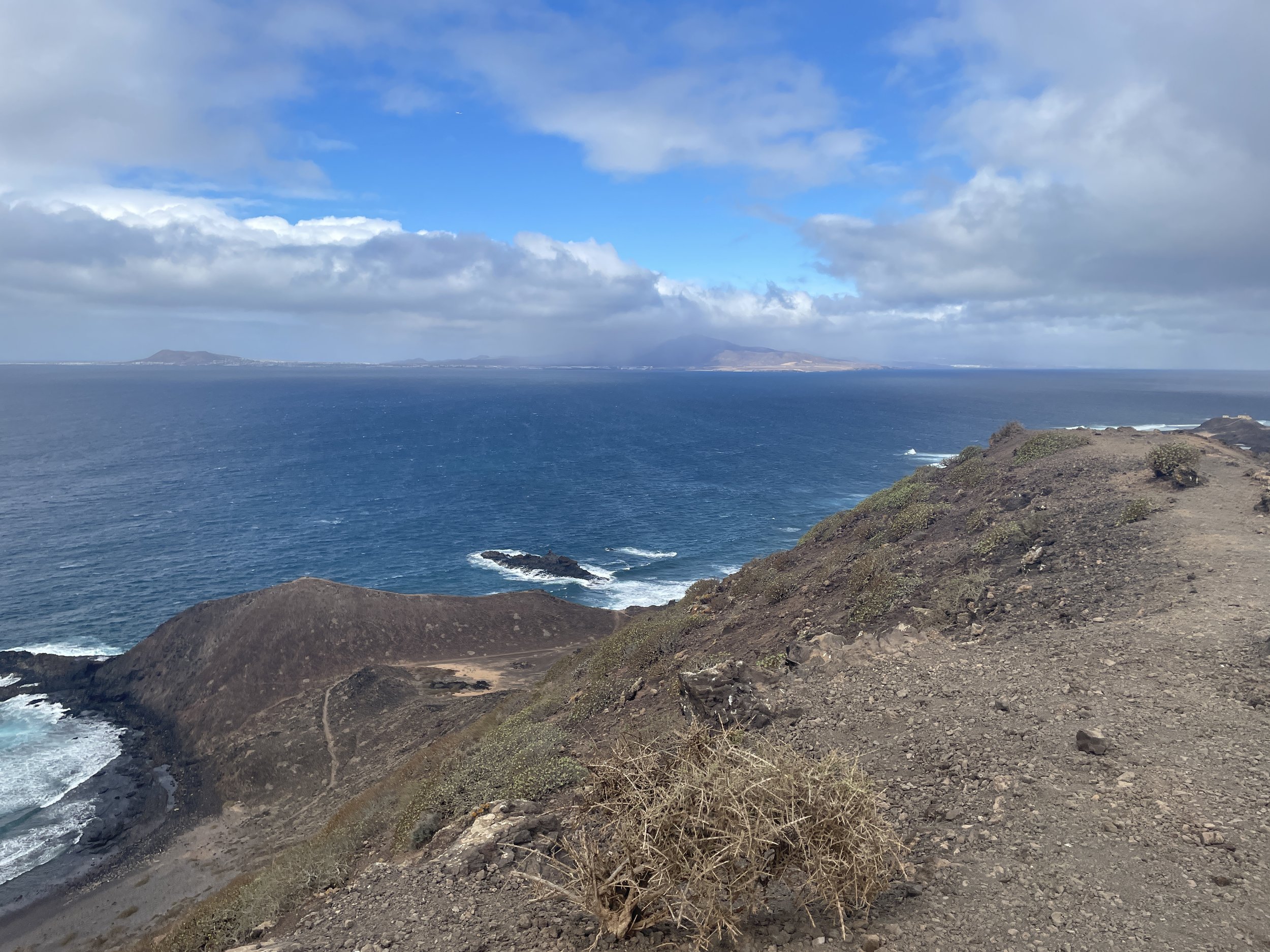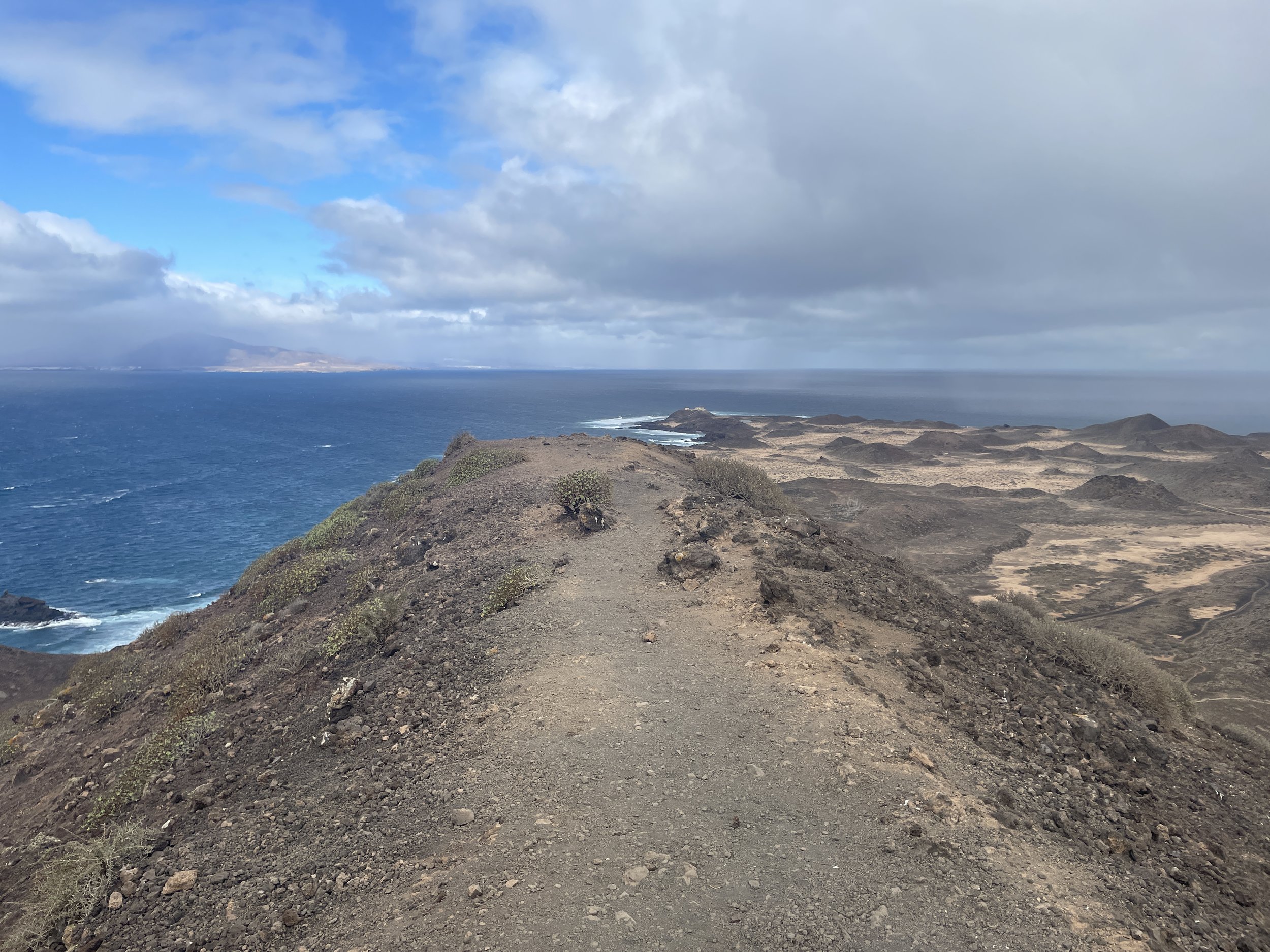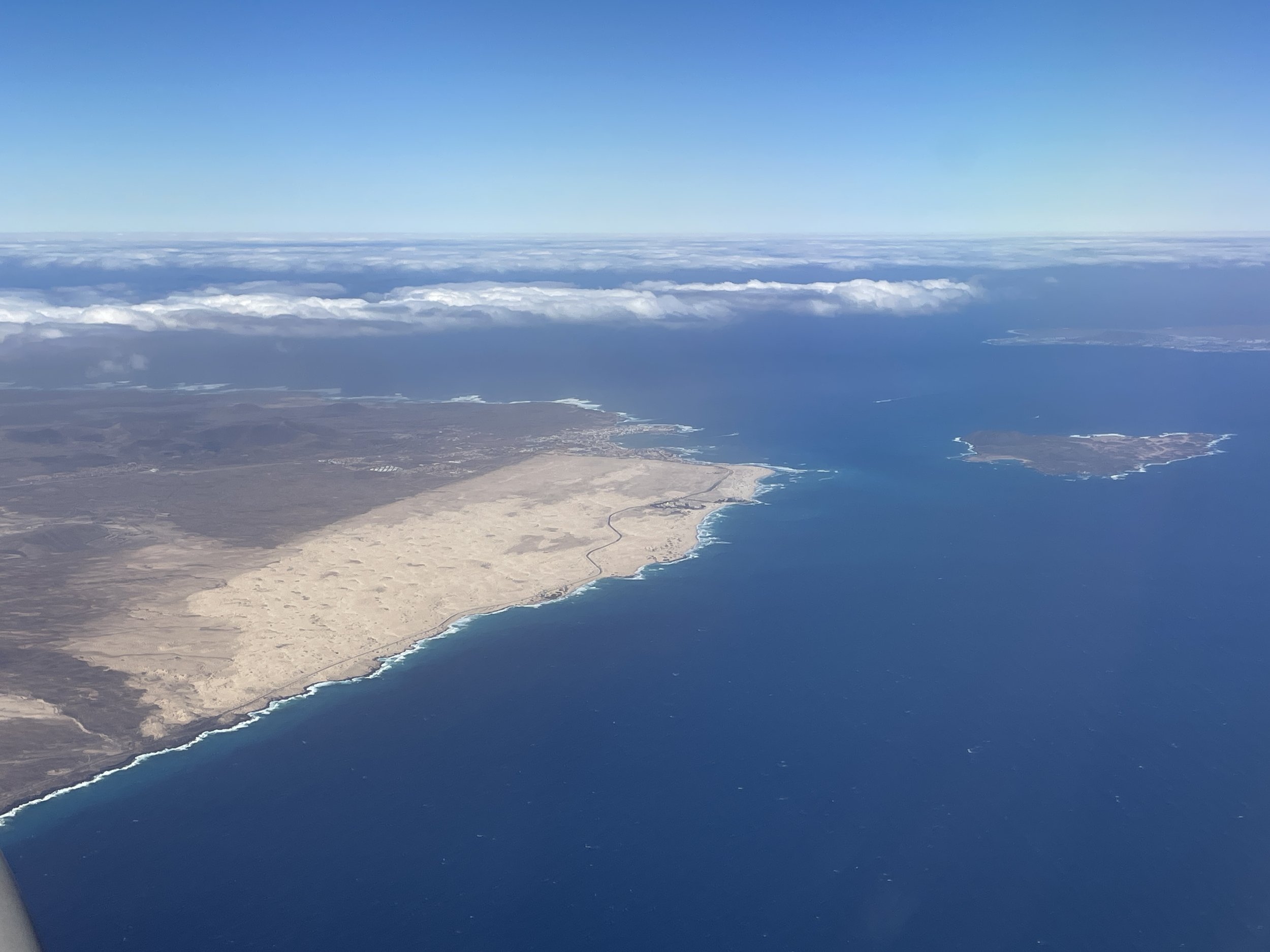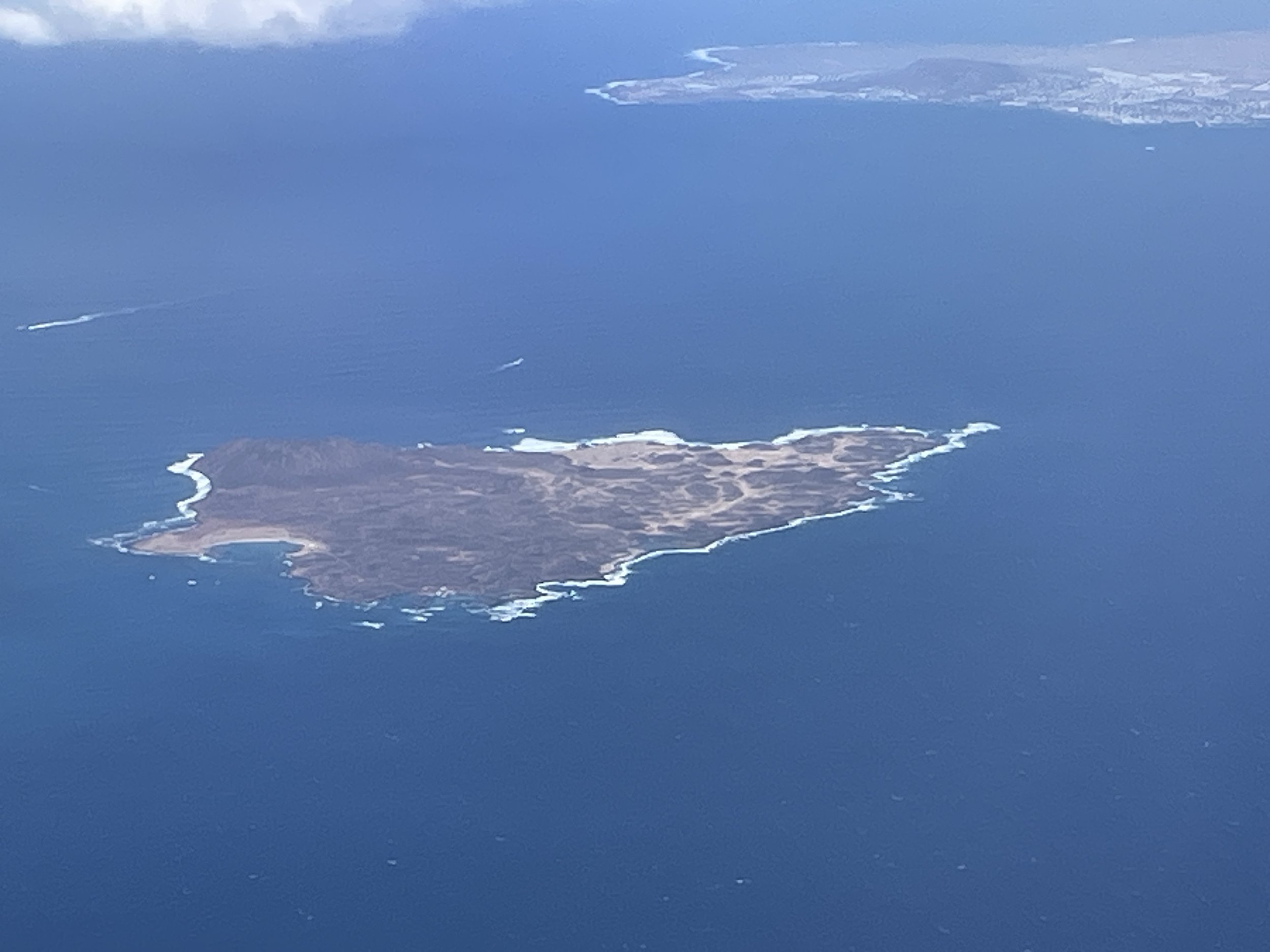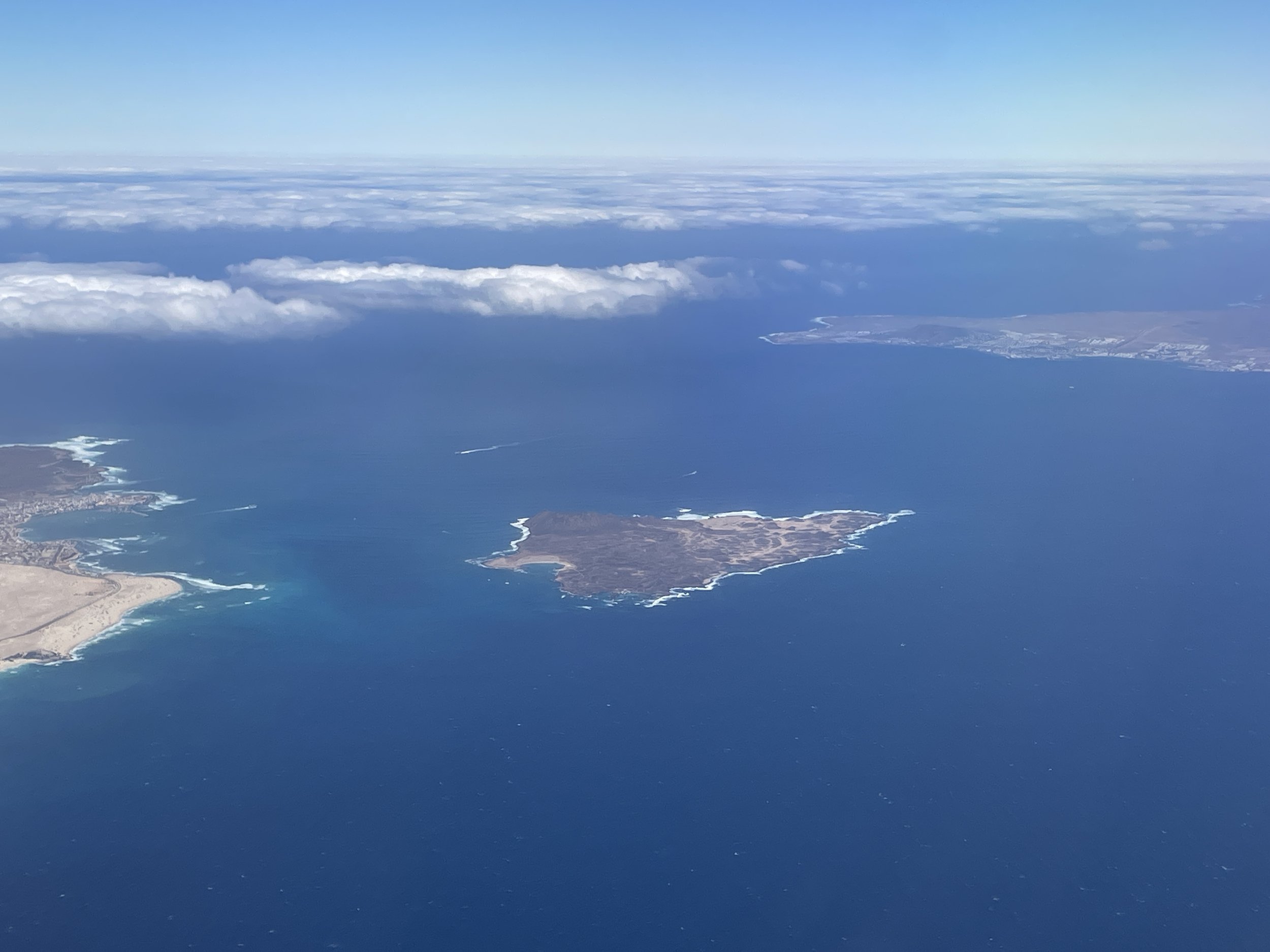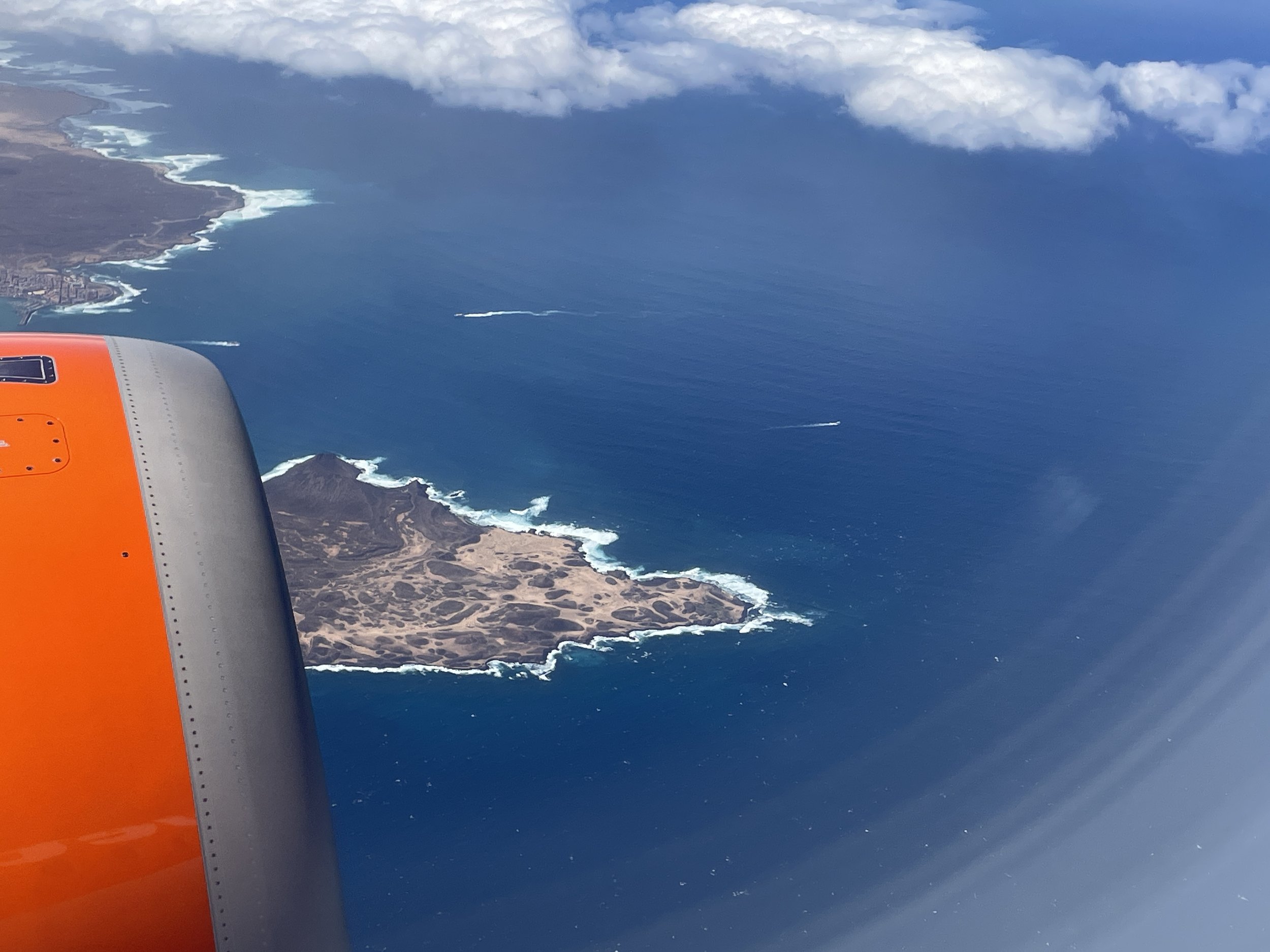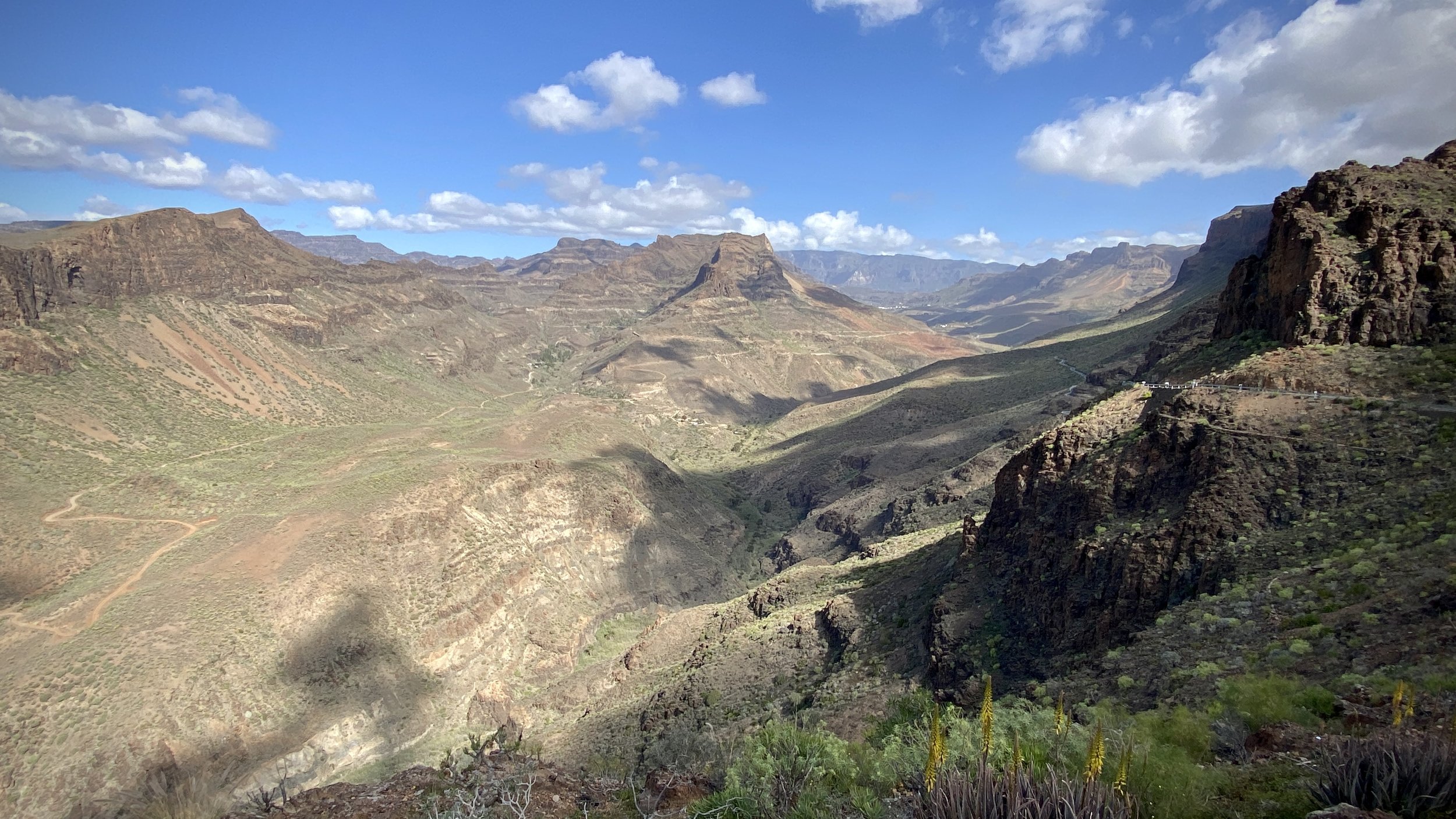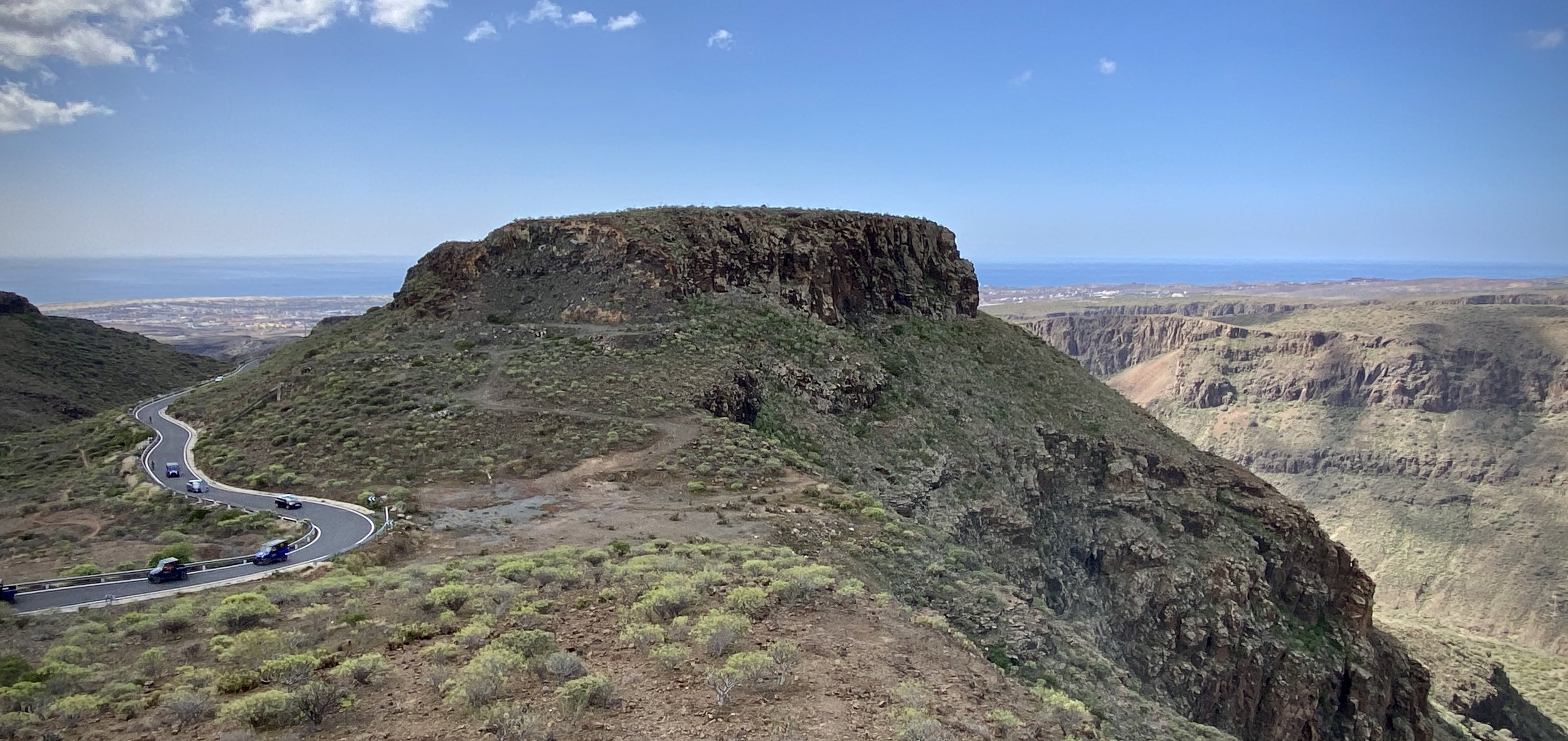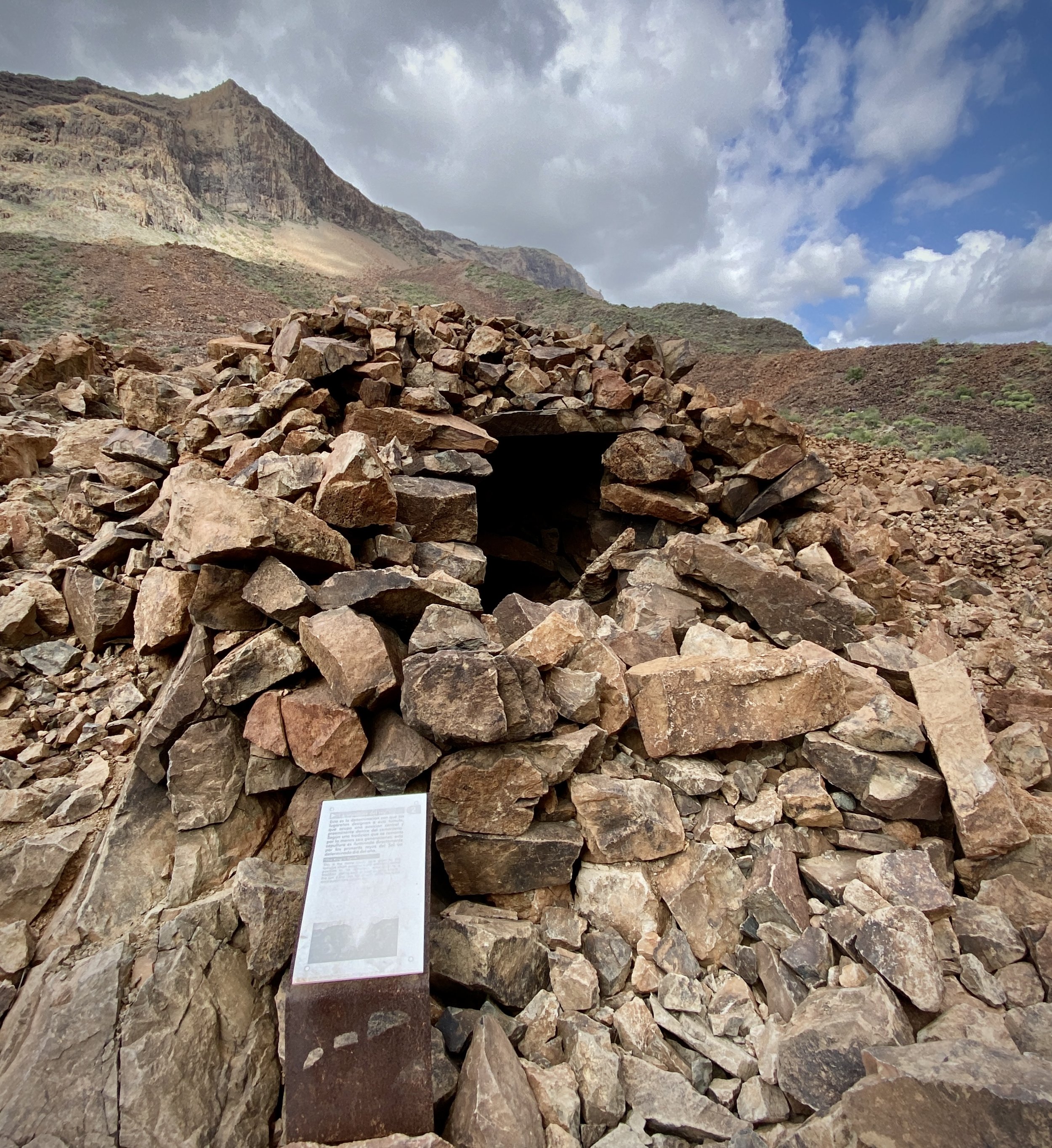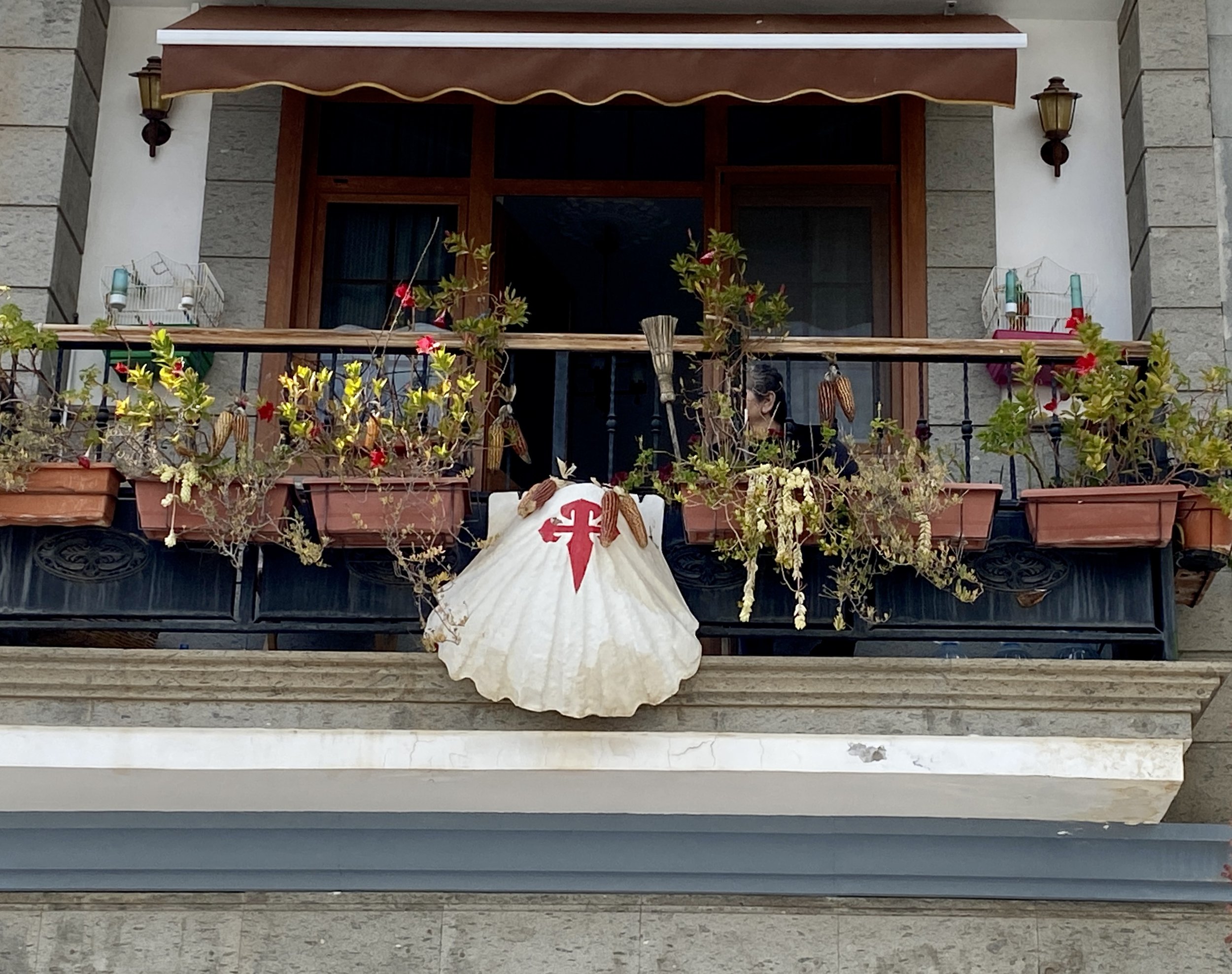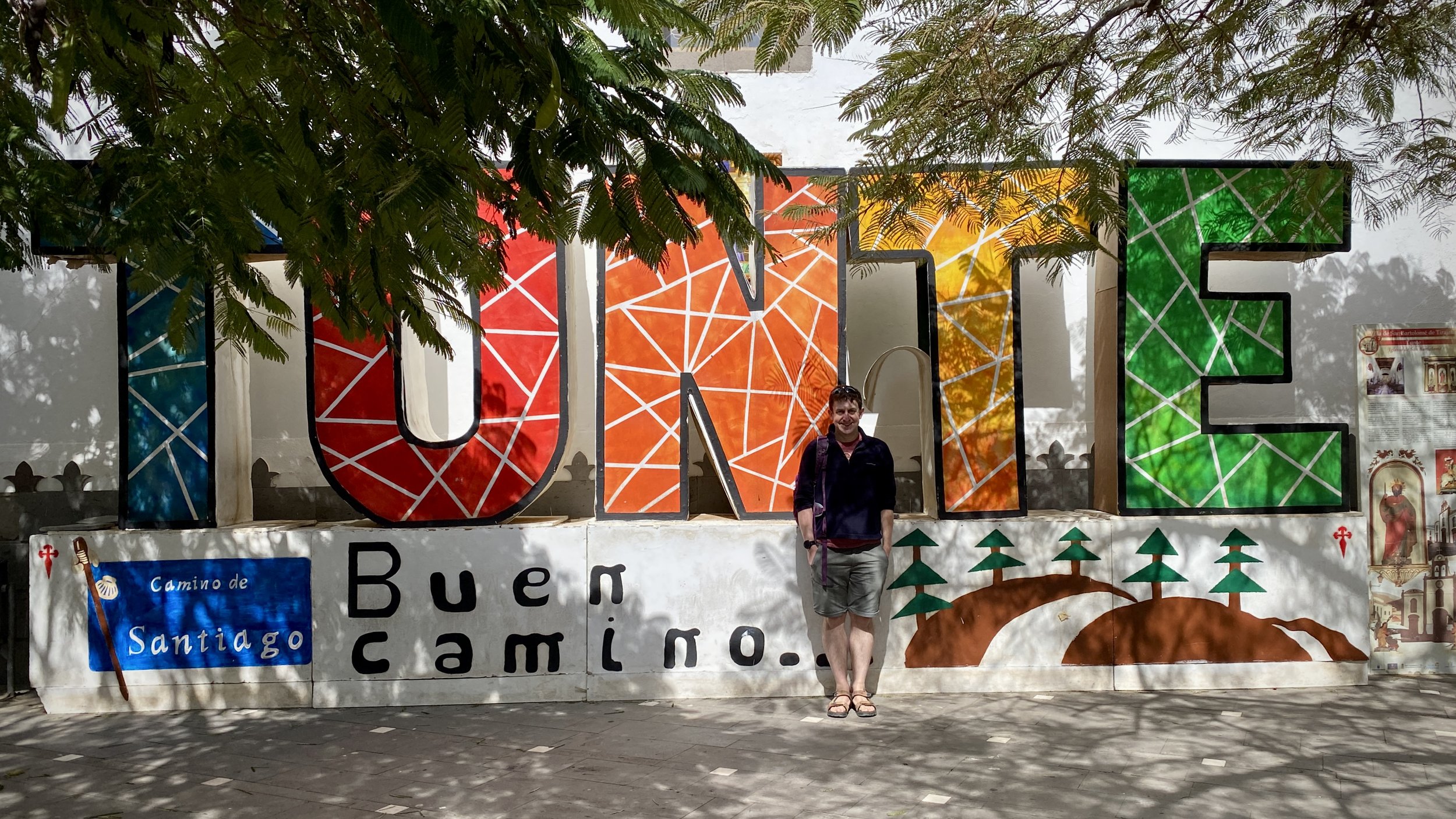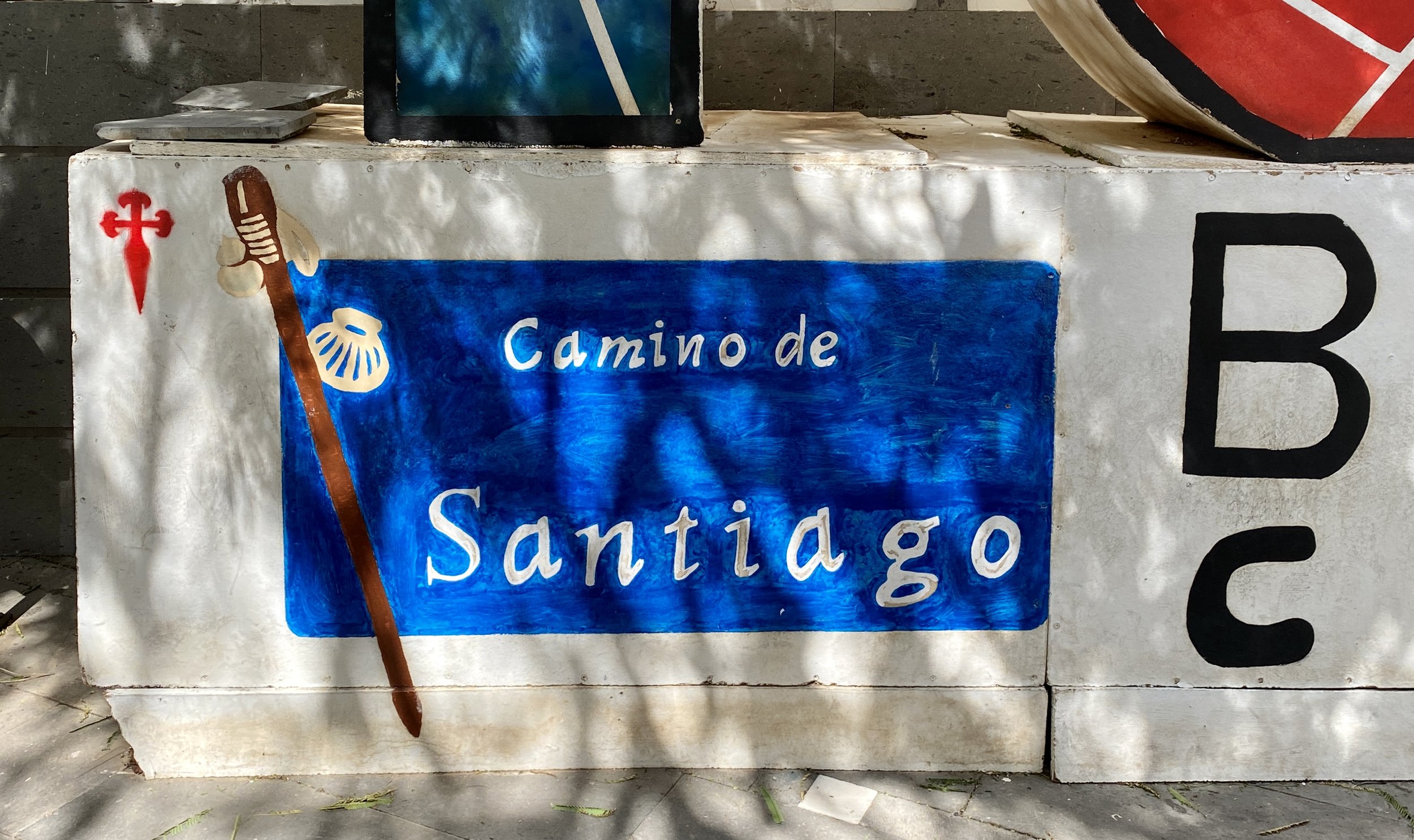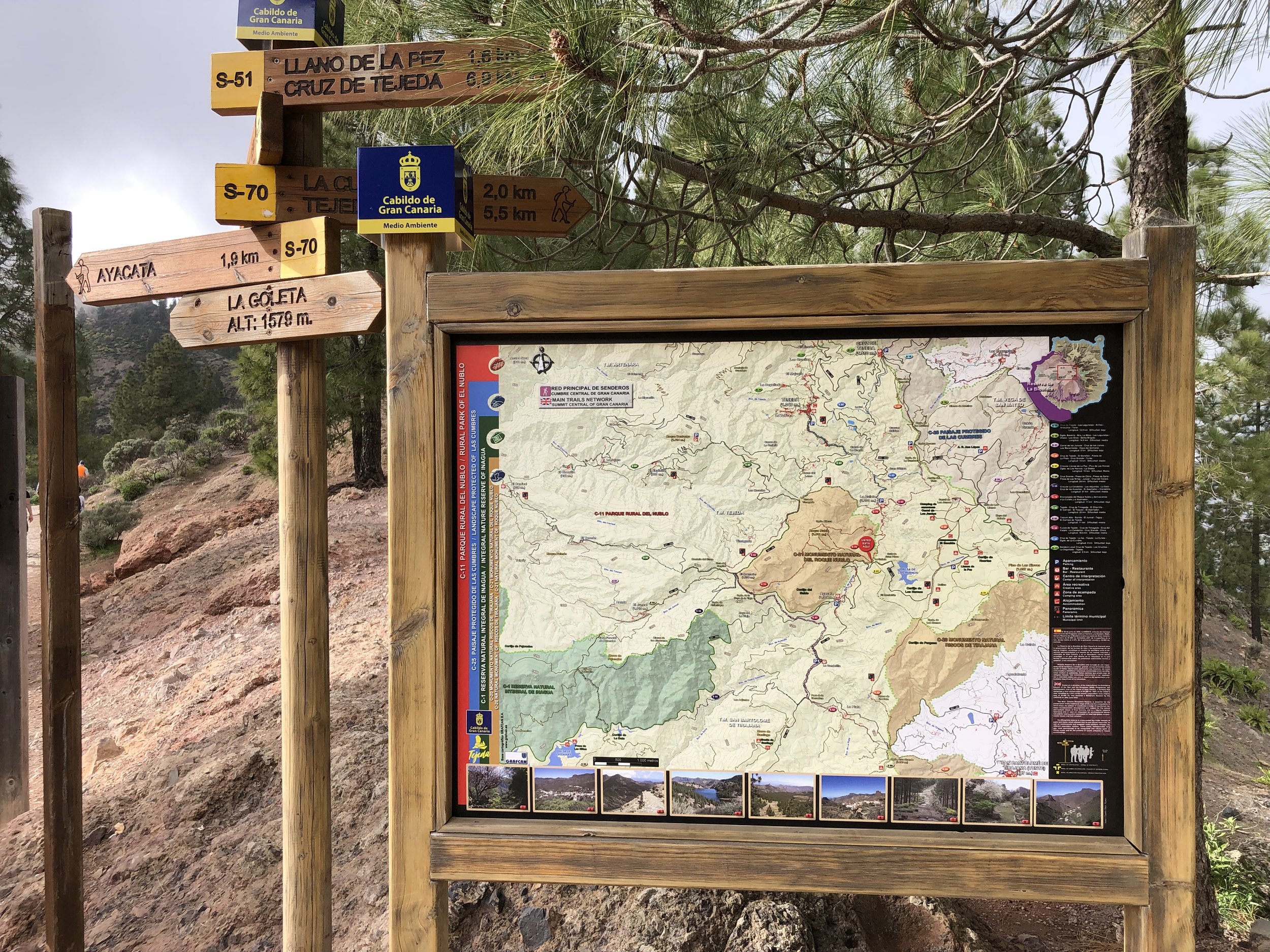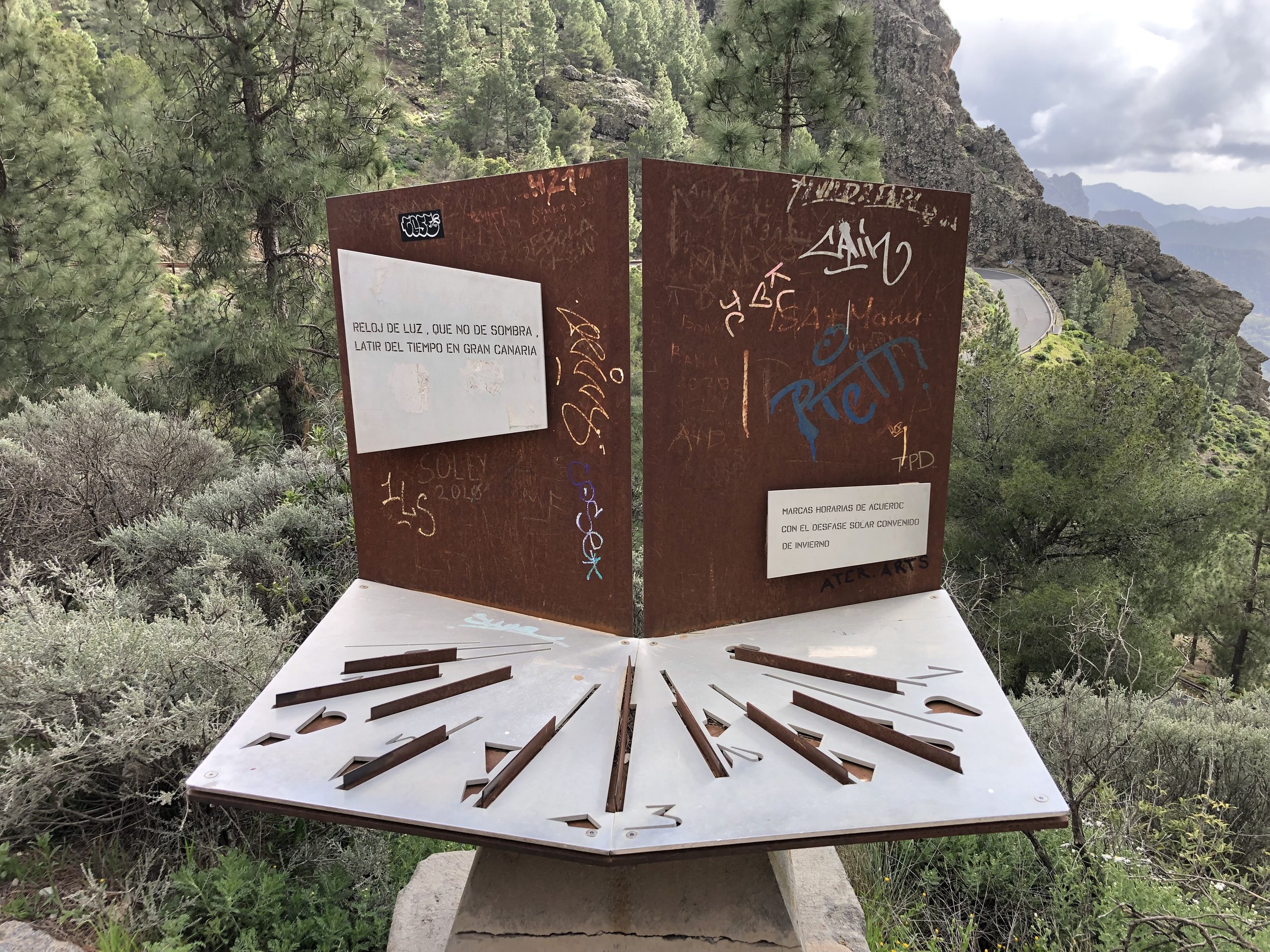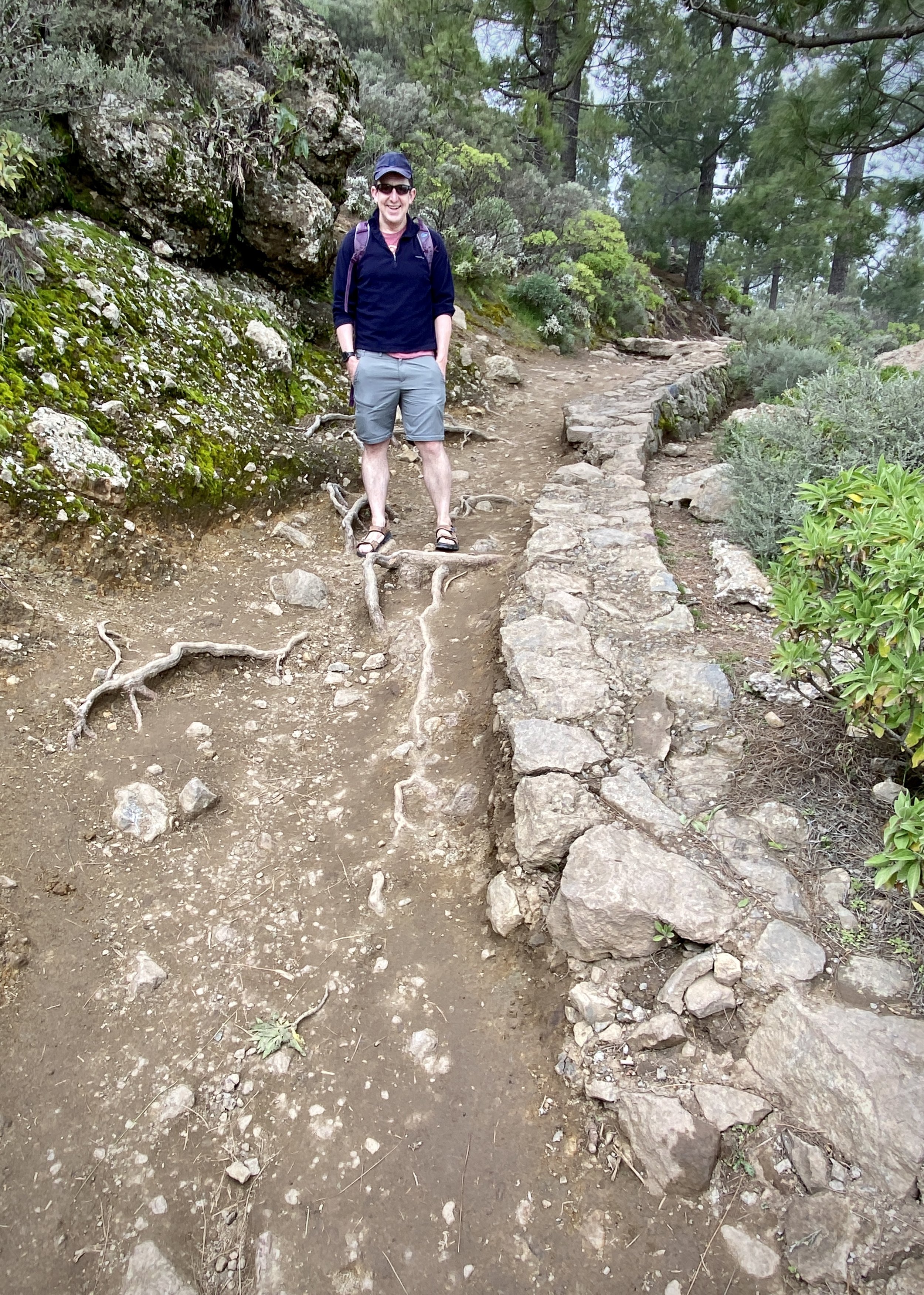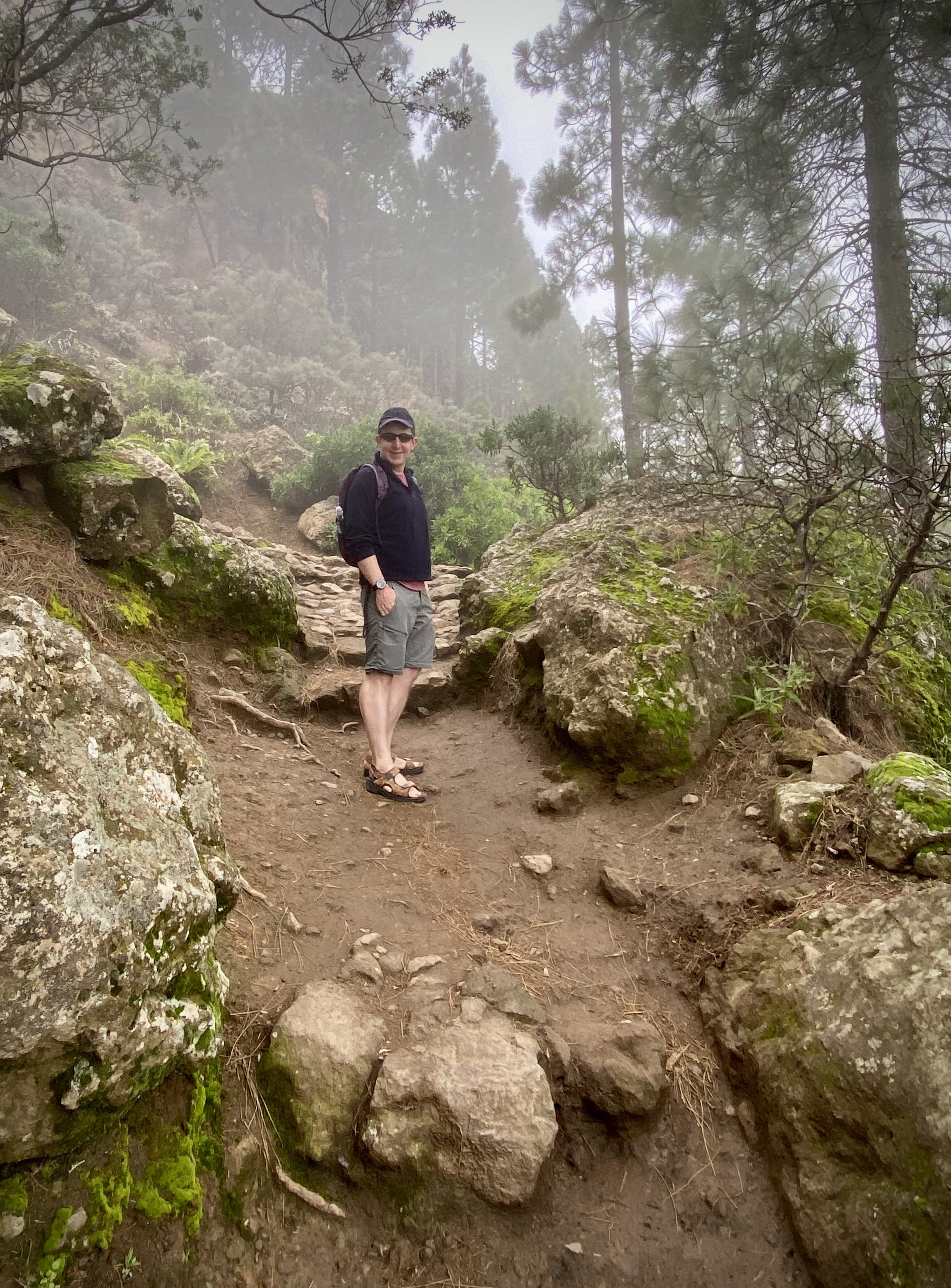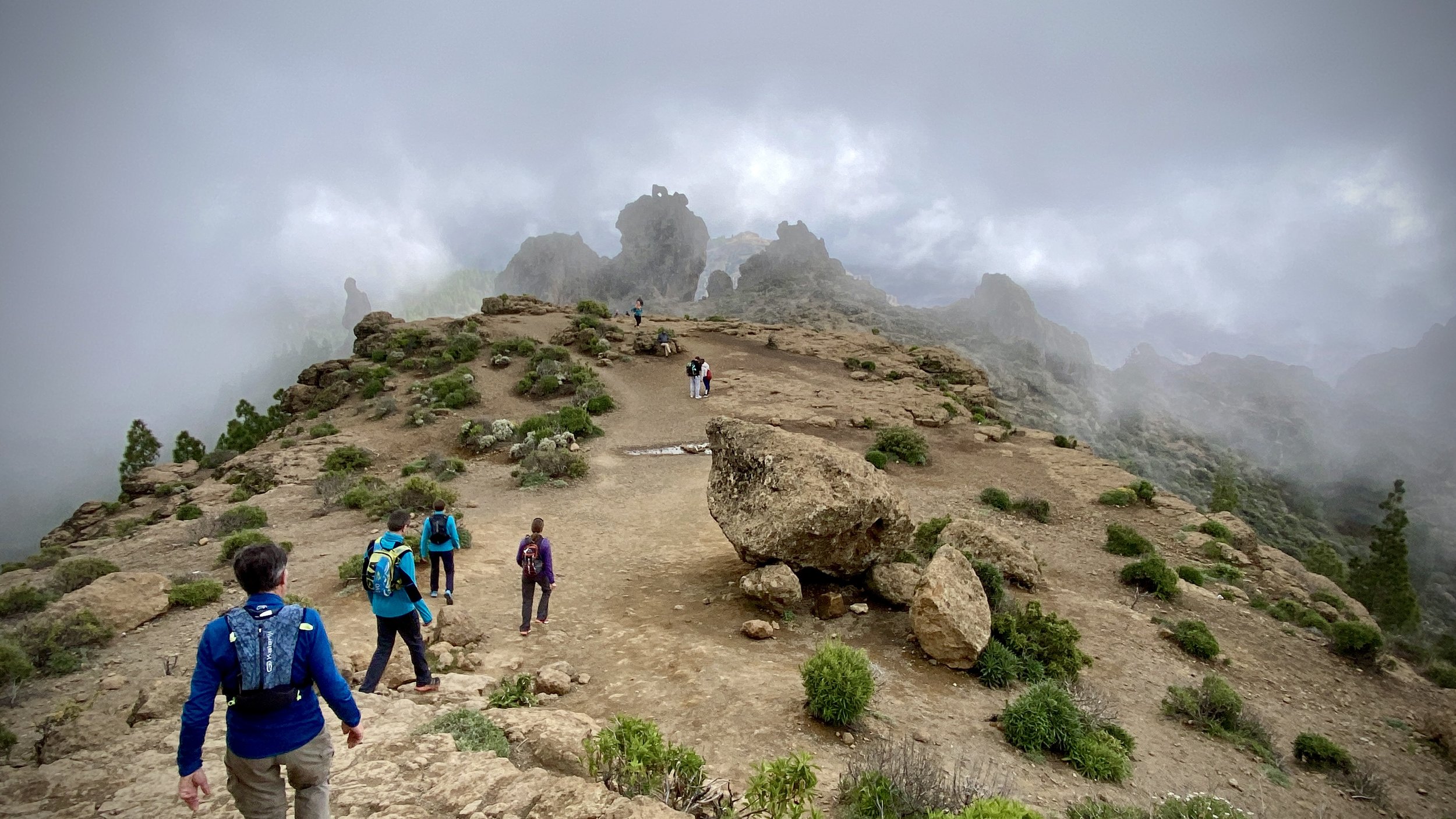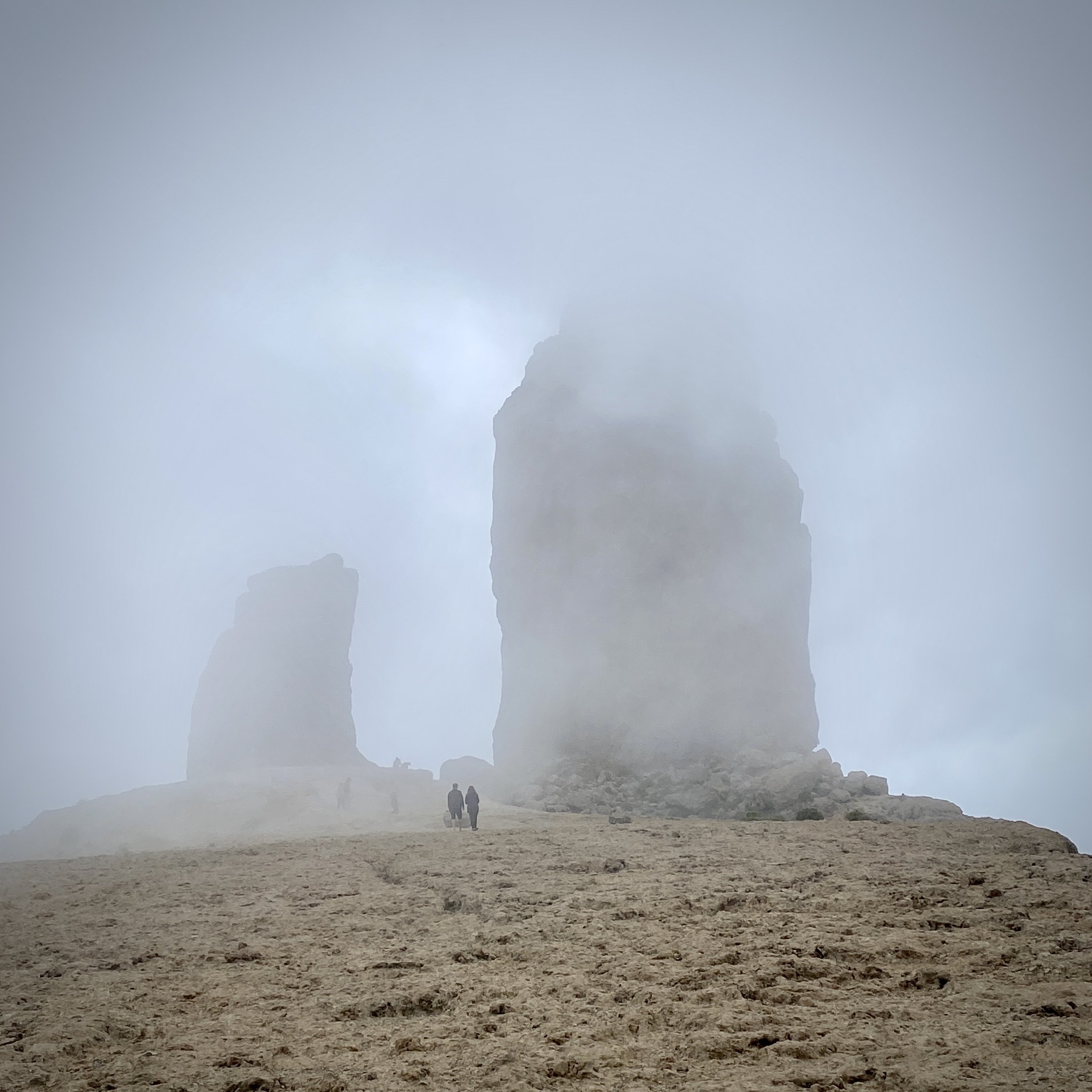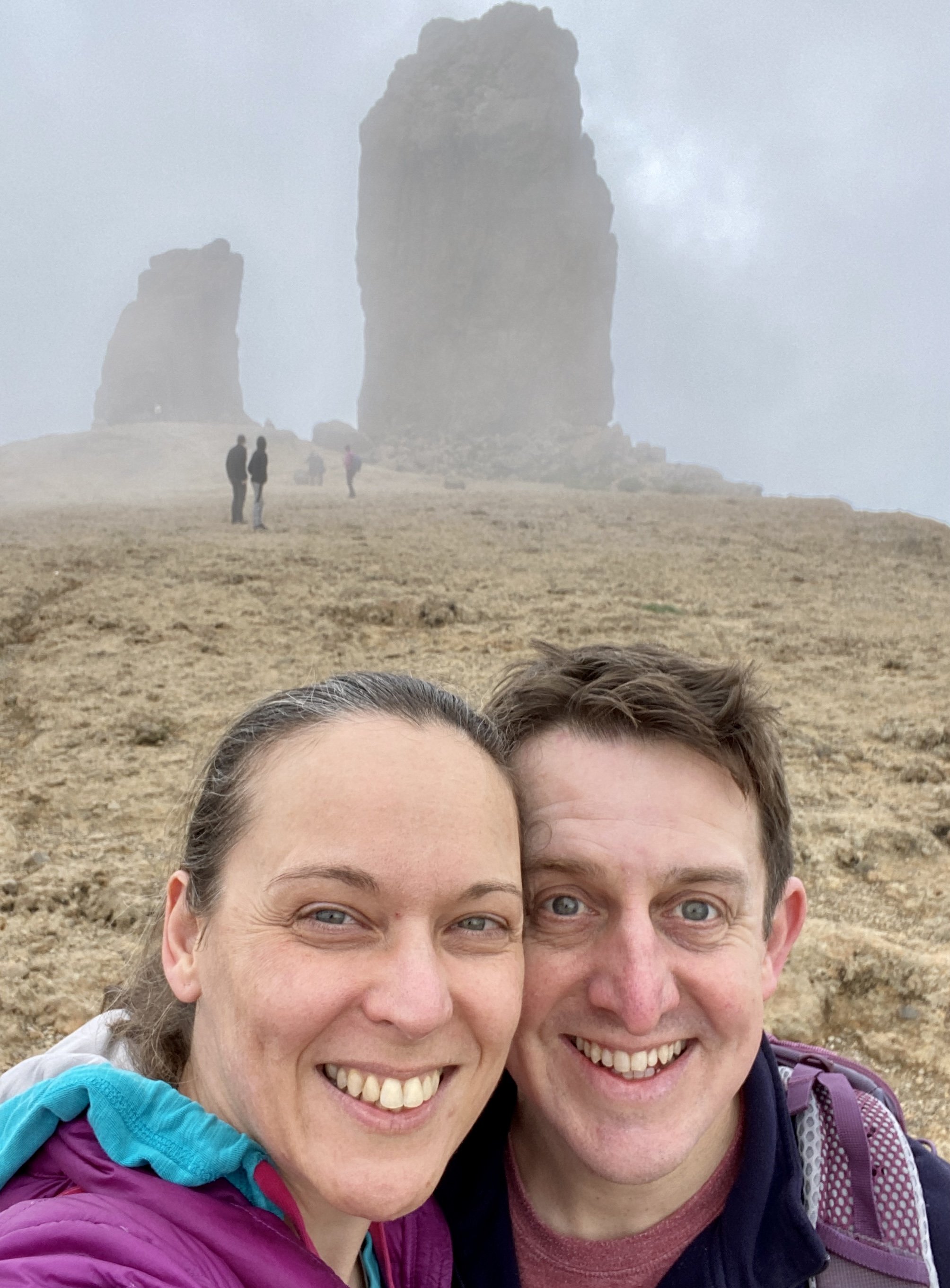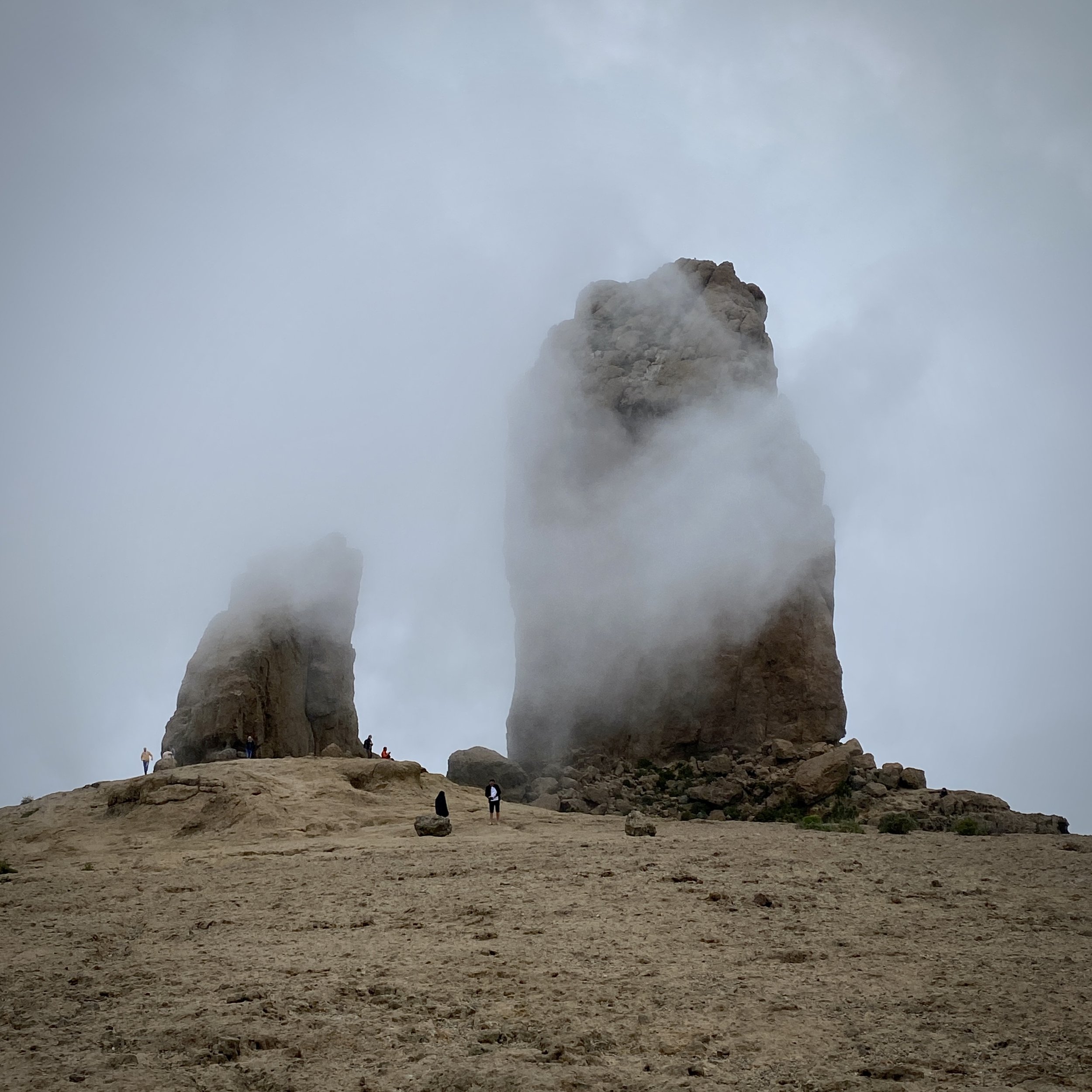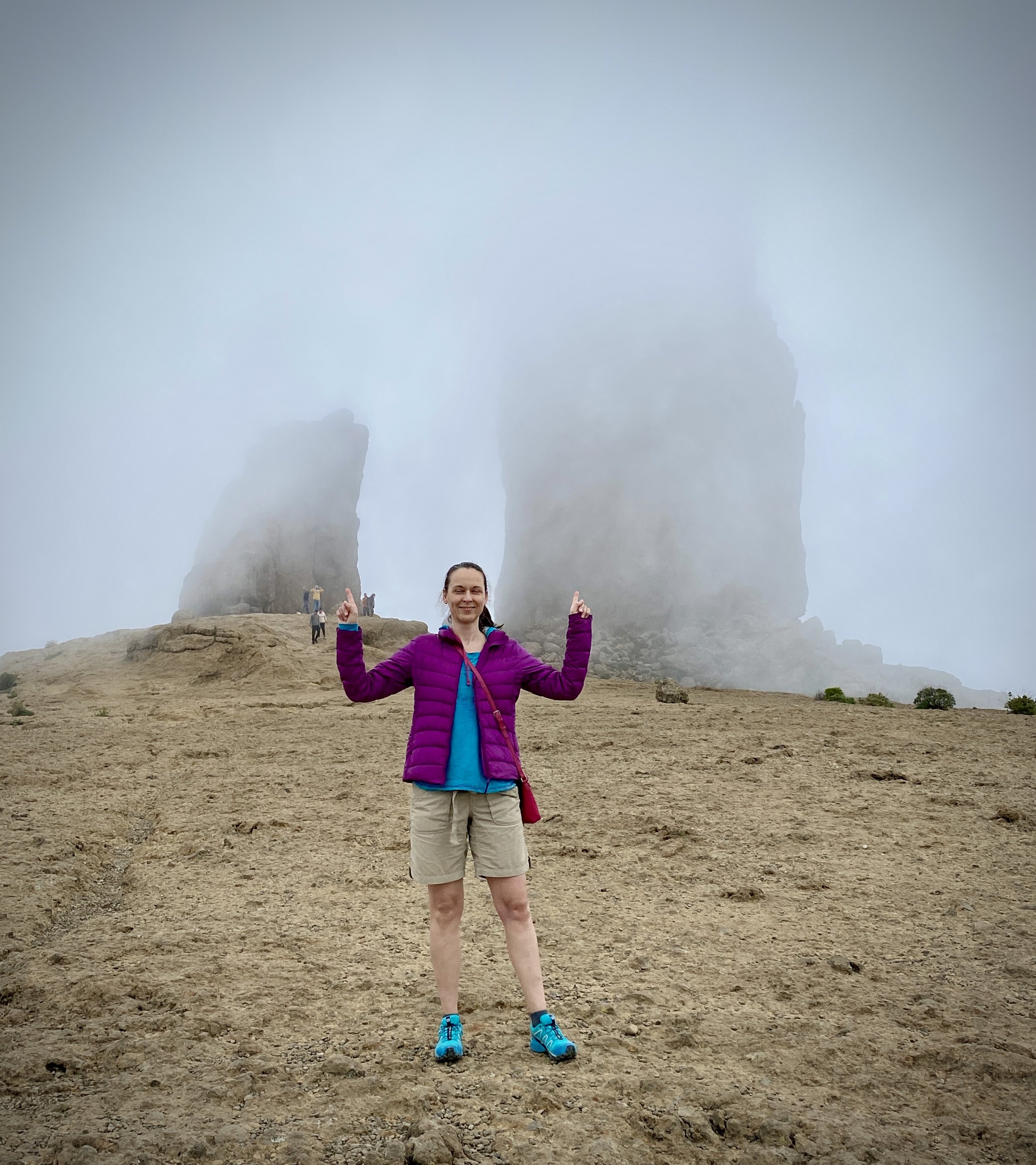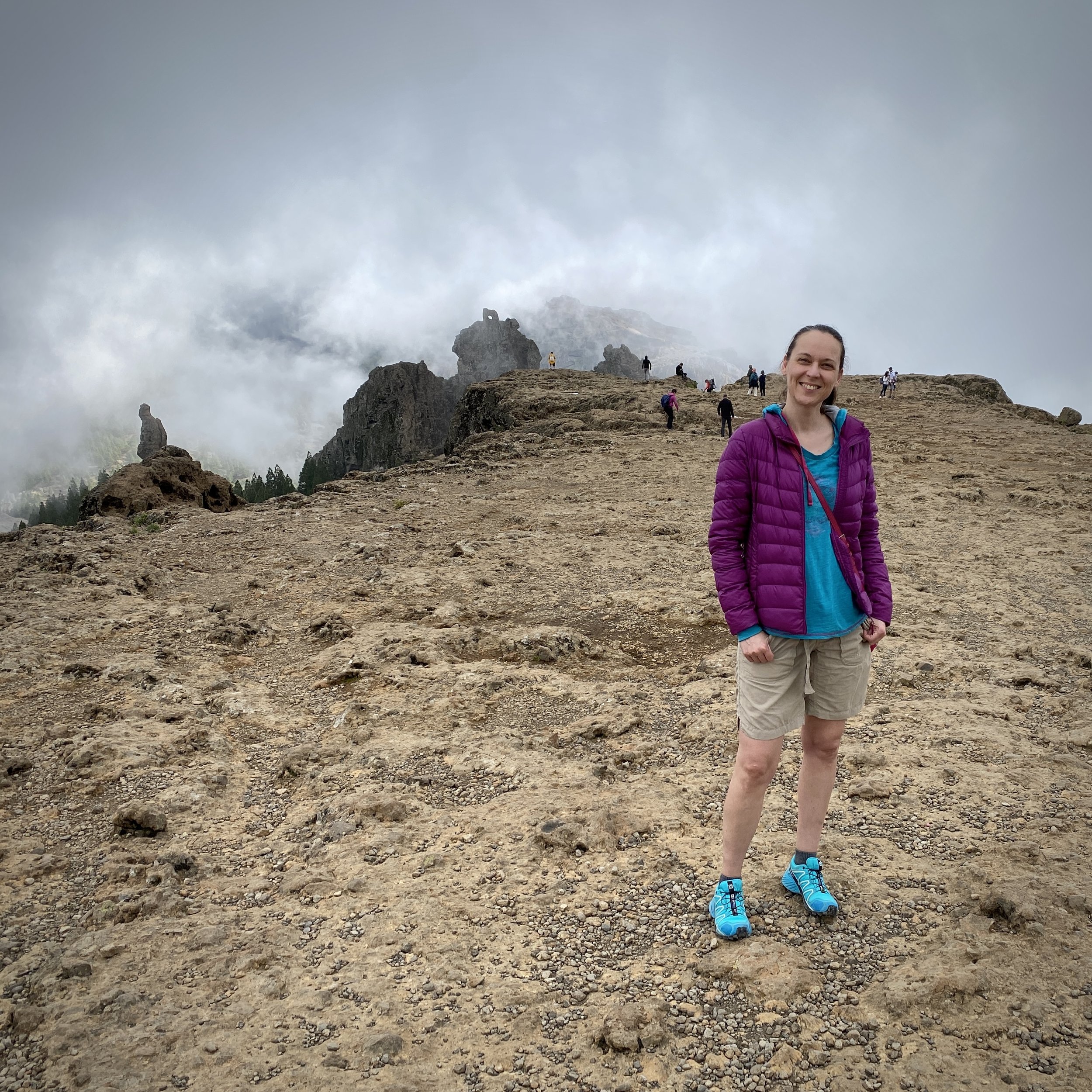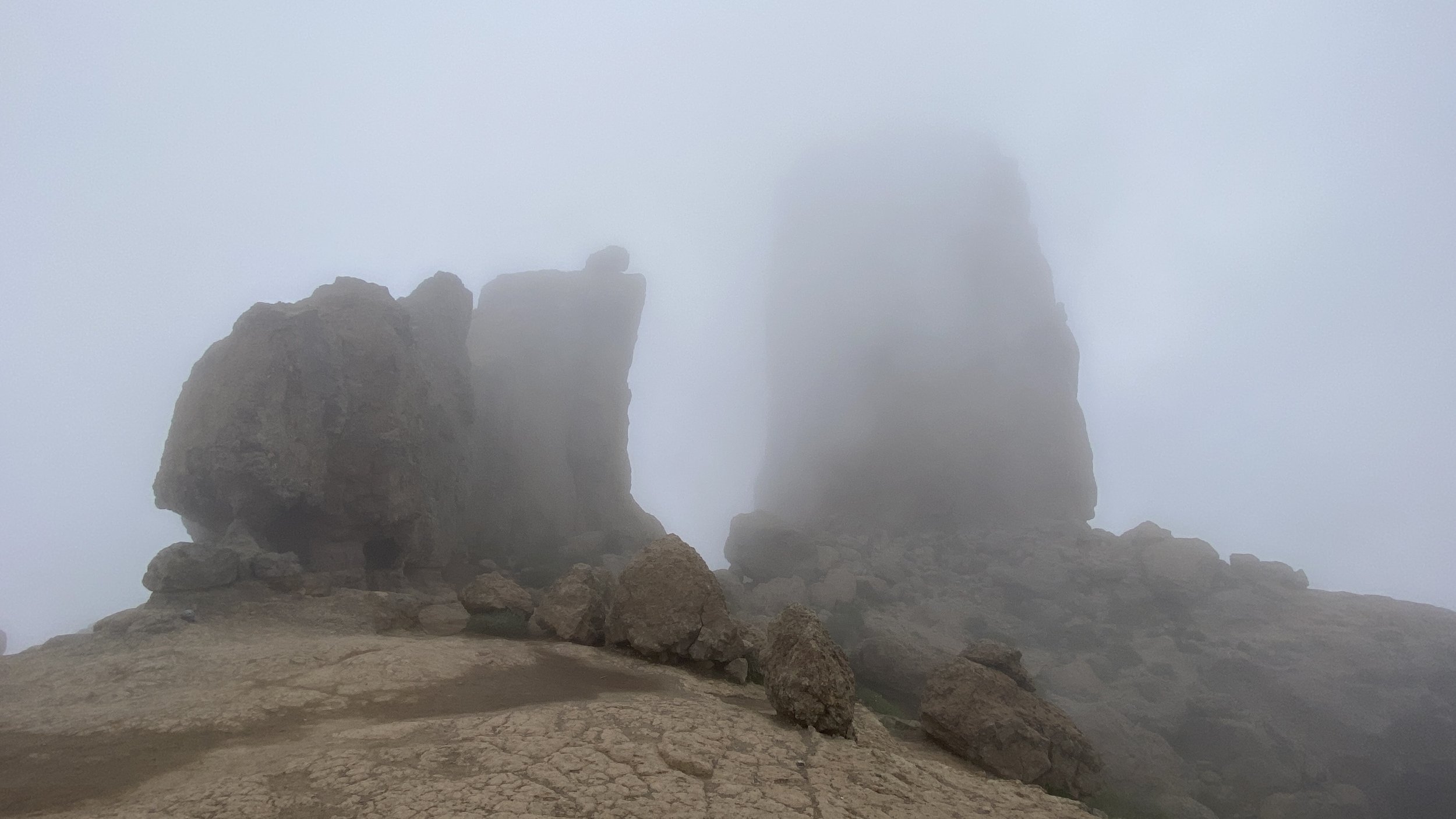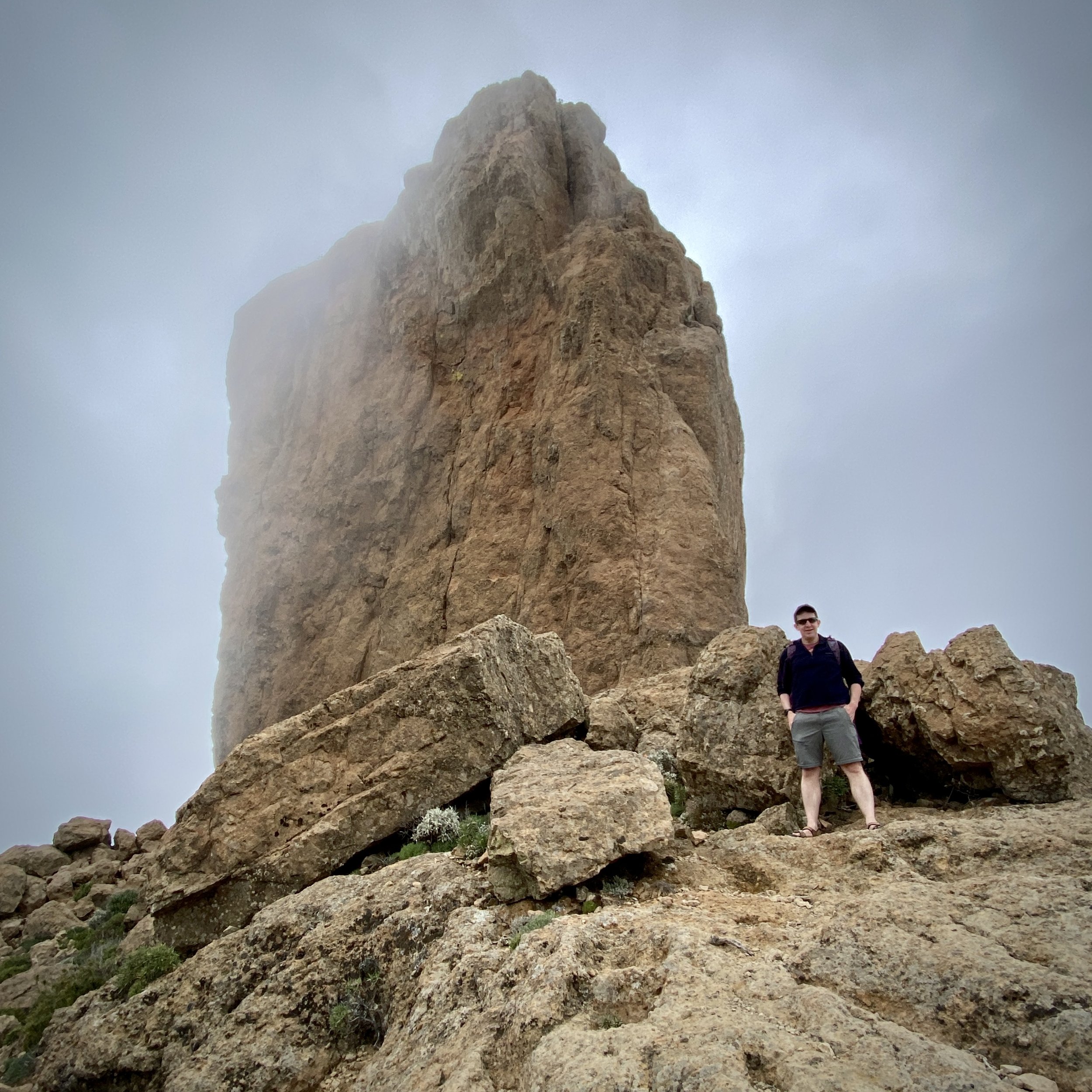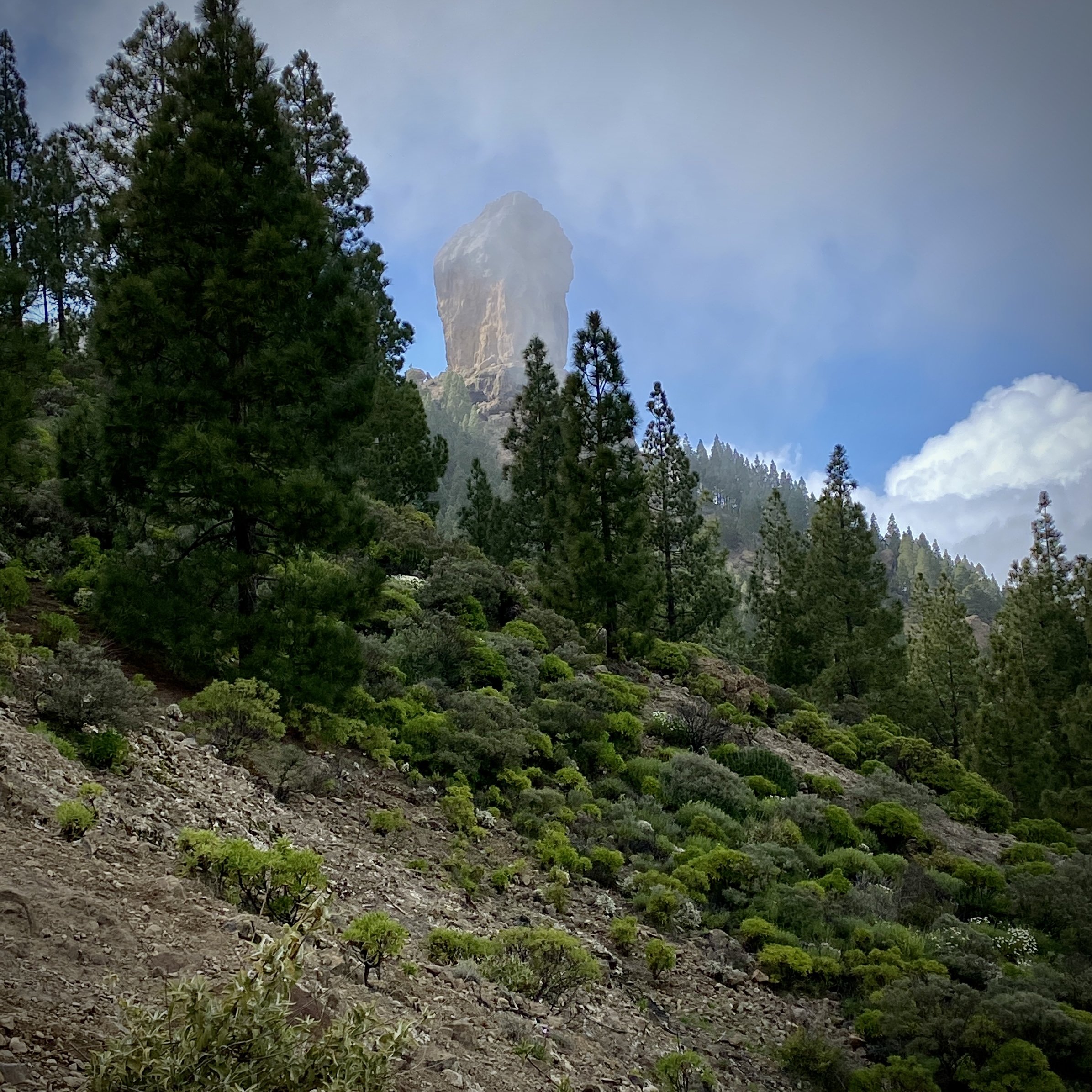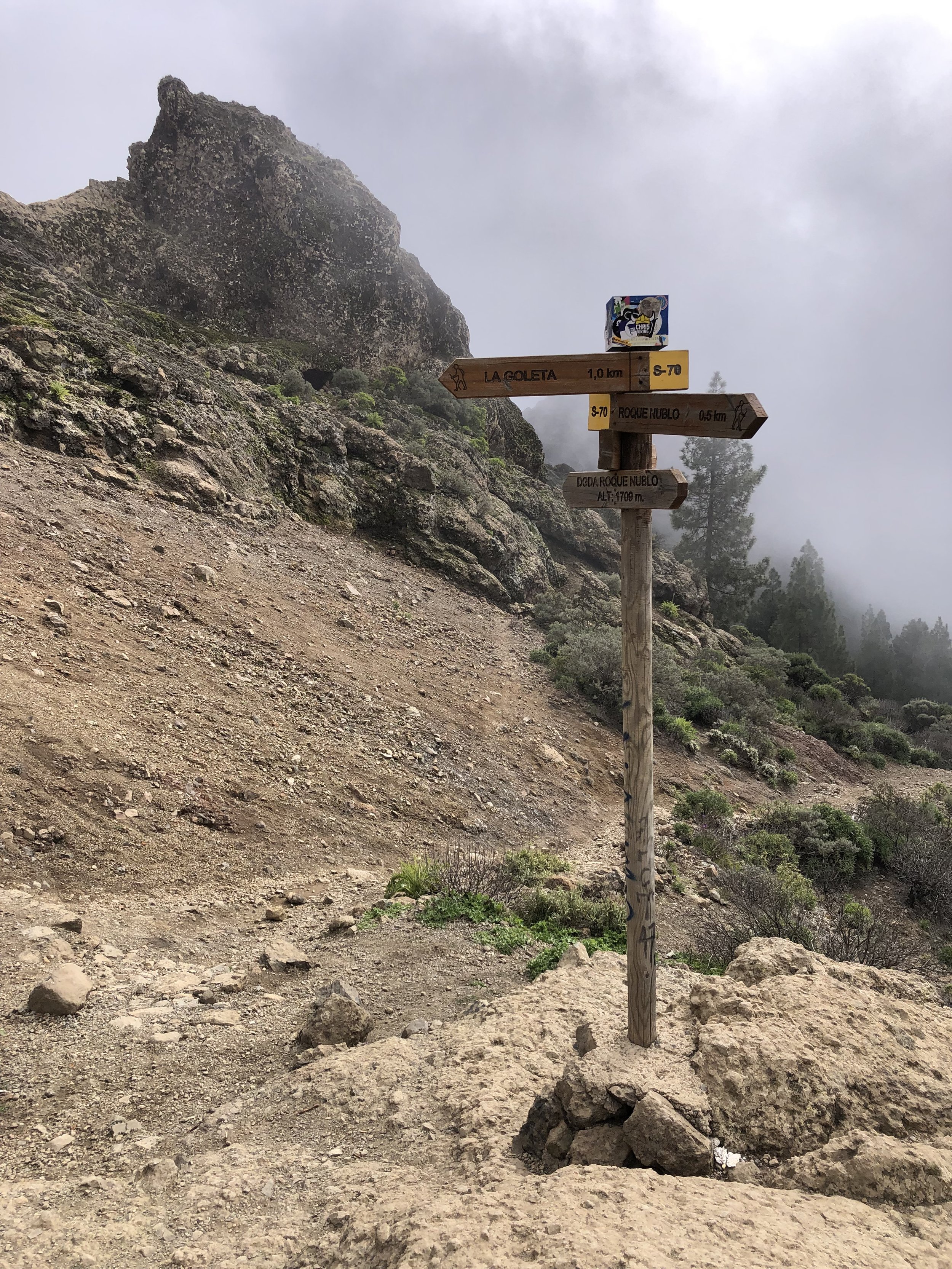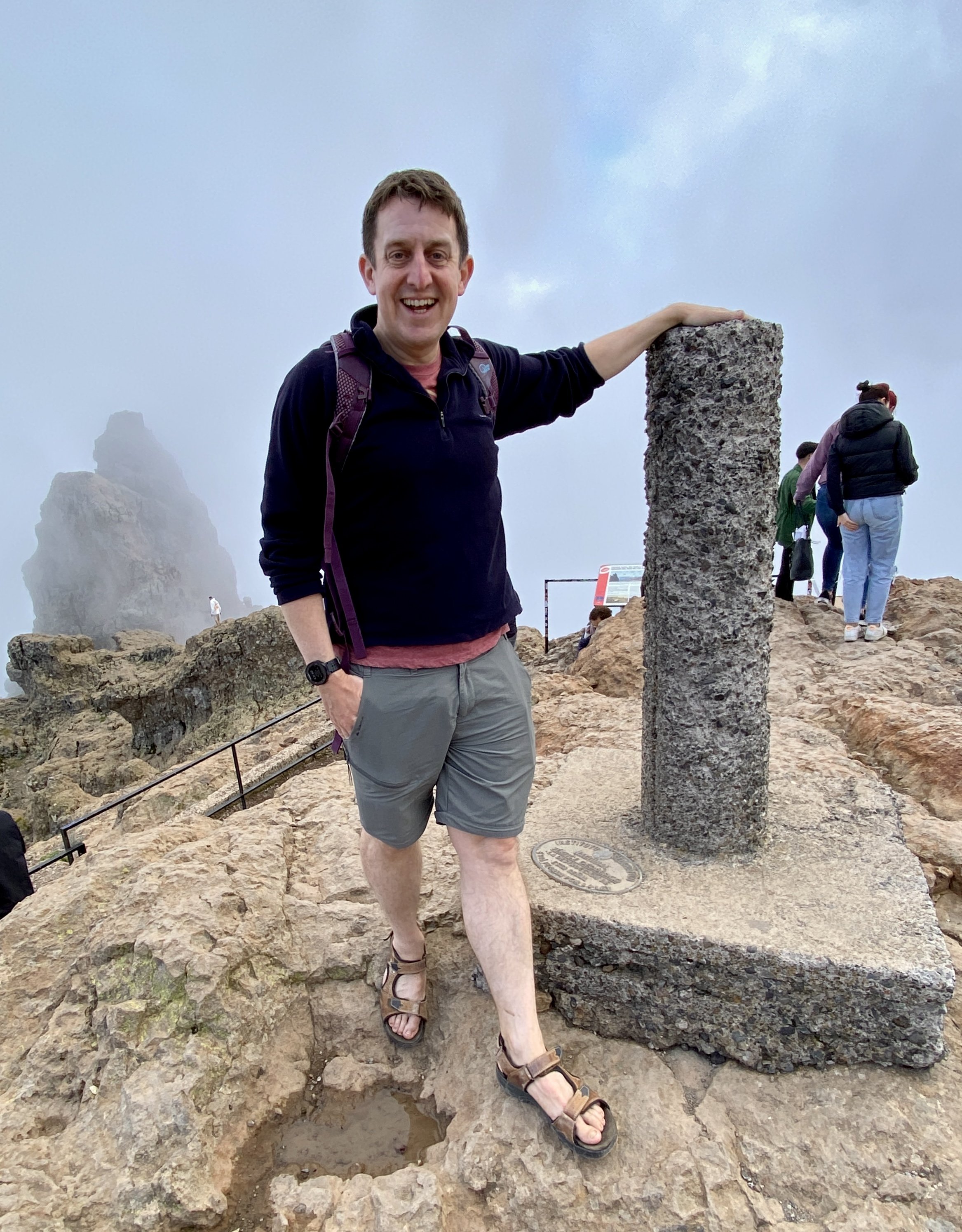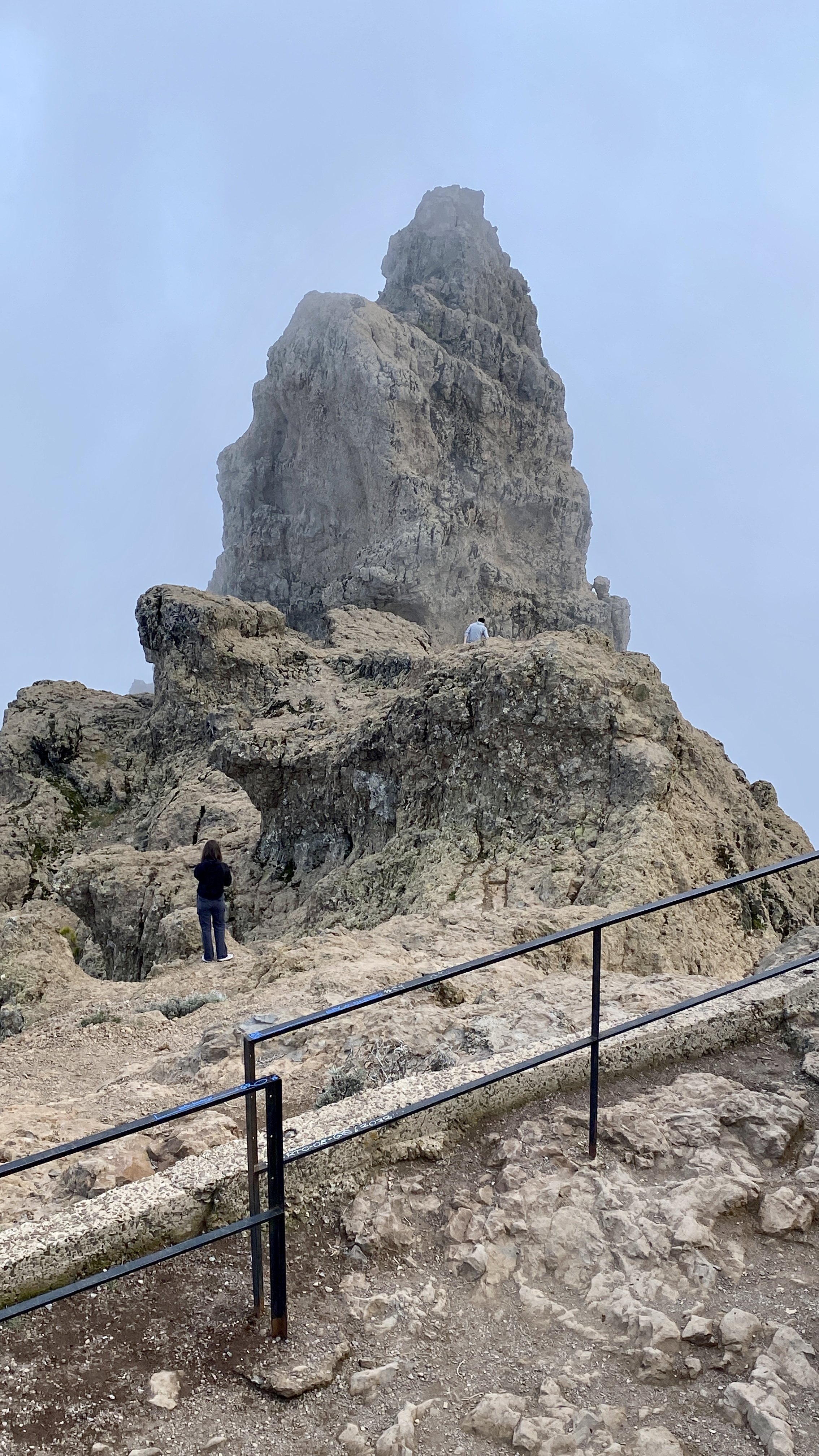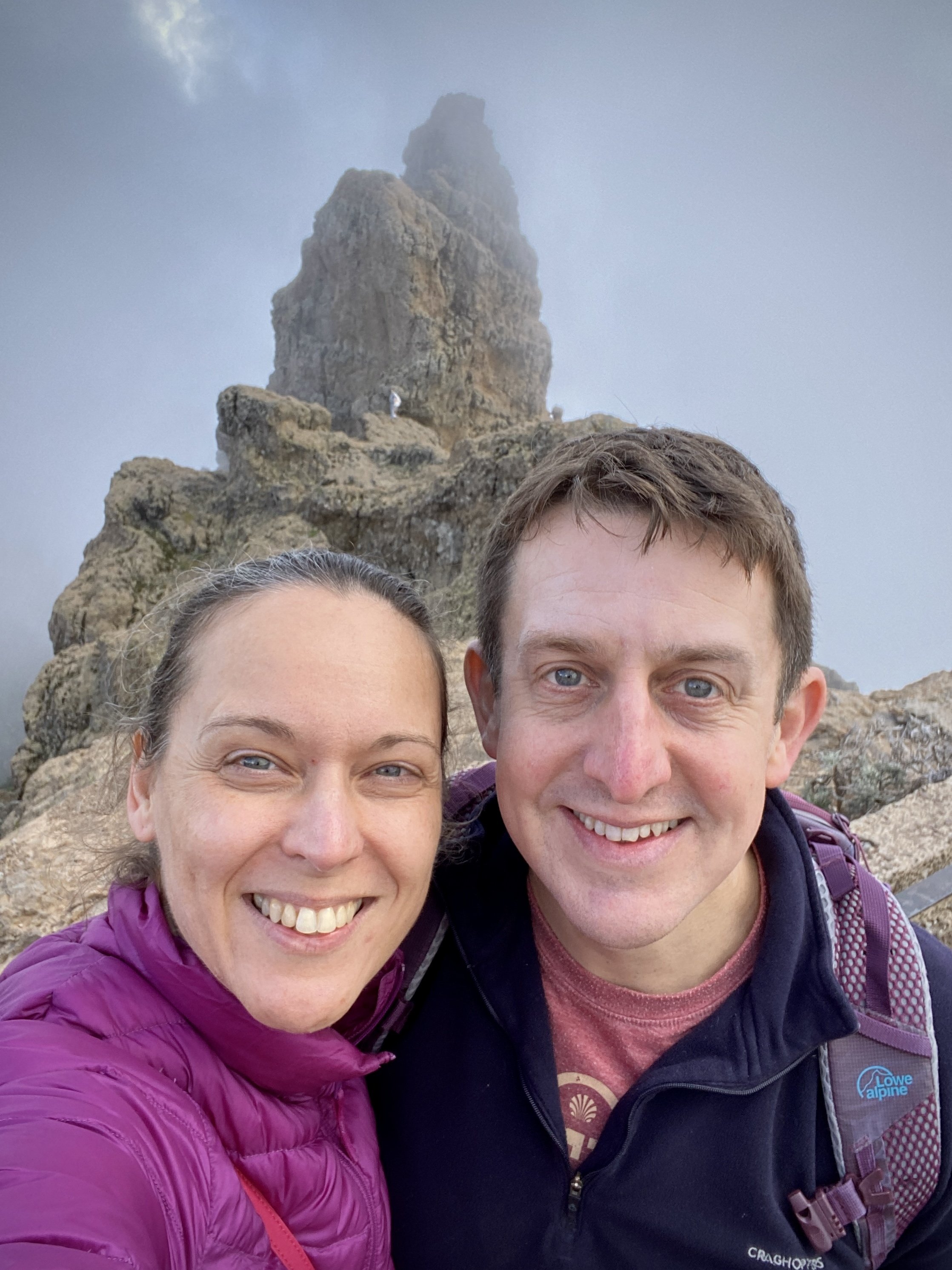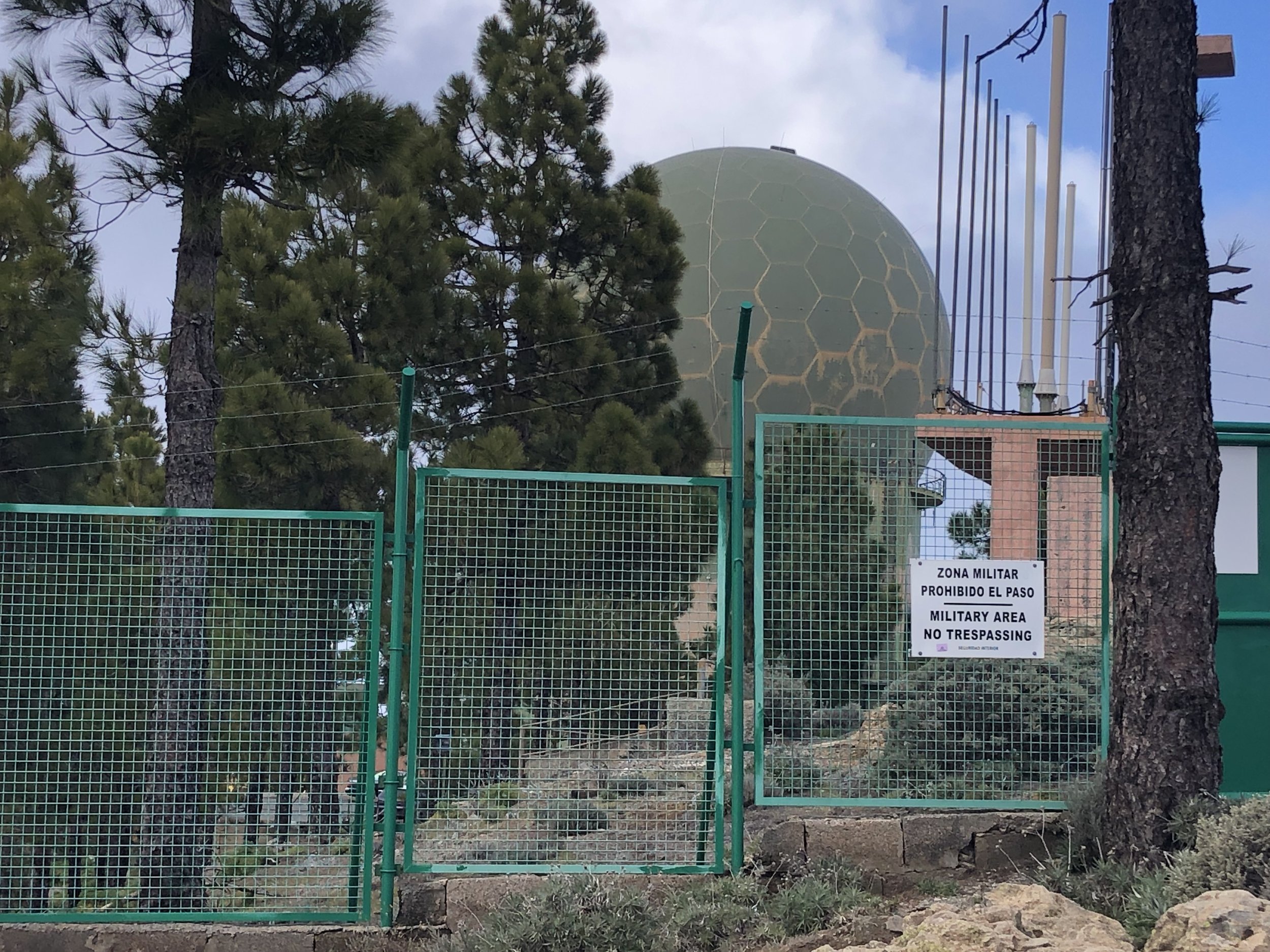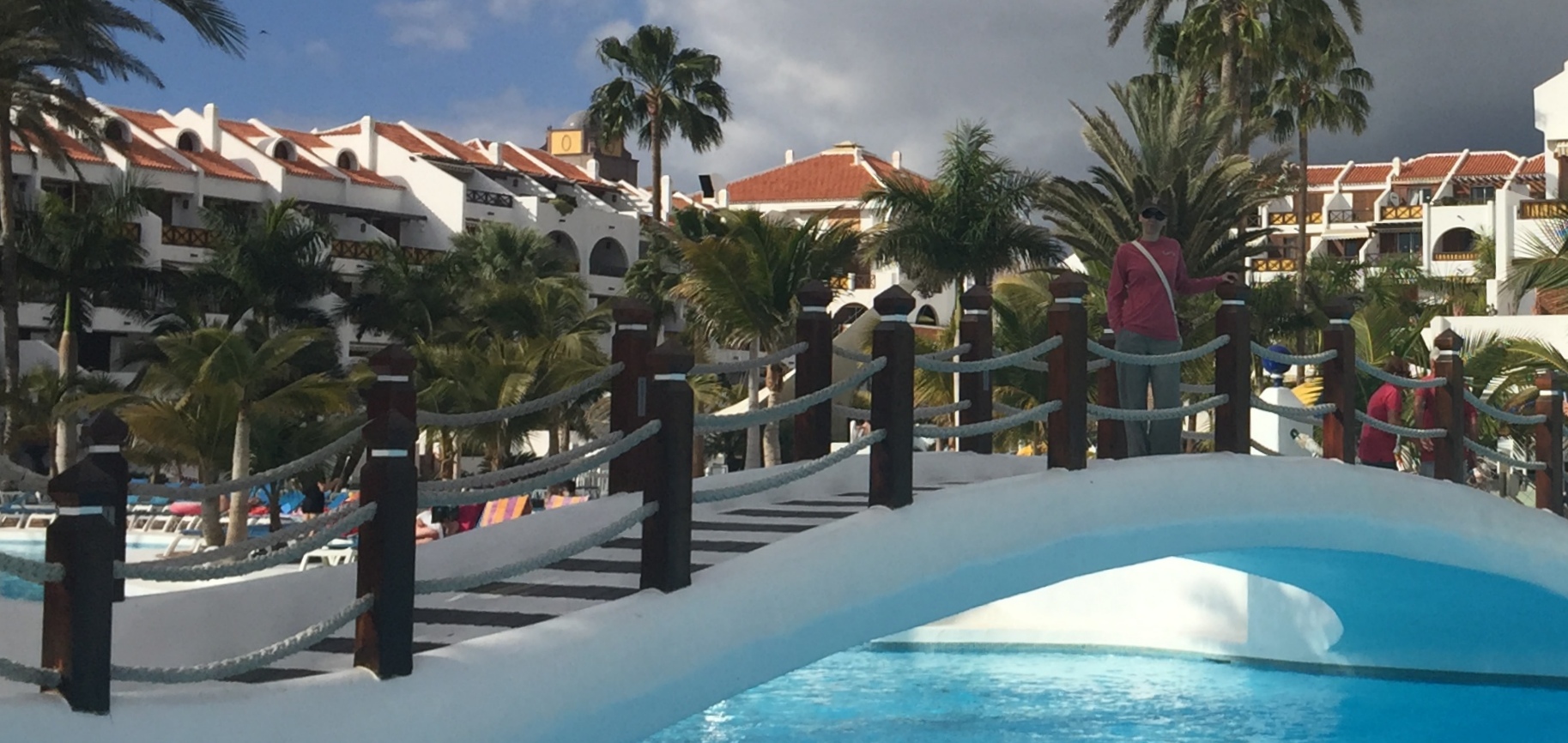Tajogiante Crater
Tajogiante
Also known as: Jedey or Cabeza de Vaca
Significance: New crater formed by the 2021 La Palma eruption.
Elevation: 1,120m. At the time it was not possible to access the highest point.
Date “climbed”: February 25th 2025
Coordinates: 28°36′46″N 17°51′58″W
Start / Finish: Parking spot on the LP-301
Distance: 7.5 km (4.7 miles)
Elevation Change: +/- 305m
GPX File: get via Buy Me a Coffee
Other Routes Touched (walk): Camino Cabeza de Voca, PR LP 14 El Paso - Refugio del Pilar. SL LP Coladas de San Juan - Llano de Jable
Cafe / pub on route: None
Links: Wikipedia (La Palma, Tajogiante), Centro de interpretación Caños de Fuego
A highlight of our 2025 winter-sun trip to La Palma was learning about Tajogiante, the new volcano created after the island’s 2021 eruption. We had booked our hotel in Puerto Naos in the south-west the island not knowing how impacted the town was by the eruption. We soon found out on our drive from the airport along a newly built highway across the lava fields.
The best place to learn about the eruption and its after-effects is the Visitors’ Centre (Centro de interpretación Caños de Fuego) near Las Manchas. The knowledgeable staff, videos and displays describe the events of both the 2021 and 1971 eruptions. You can also visit one of the lava tubes with a guide and walk along the raised platform over the lava fields. You can visit the larger lava tube (Cueva de Las Palomas) but you’ll need to use a separate tour company. You can find details of these companies at the Visitor Centre reception. Several of them also do the guided tours to the Tajogiante Crater.
We chose La Palma Natural for our 3-hour guided walk to the crater. Note that you can’t do the walk without an authorised guide and you’ll be stopped by a ranger at the hut near the start of the walk. We met our guide plus the 4 other guest at the Tourist Office in El Paso and were driven to trail-head on the LP-301 road. From there it’s a beautiful 4 km walk descending down to the nearest point you can get to the crater. As with the Roque de los Muchachos trip earlier in the week, we were blessed with warm, dry weather and a clear sky so the views were amazing. The return to the start followed a different route, gradually ascending to the road.



































